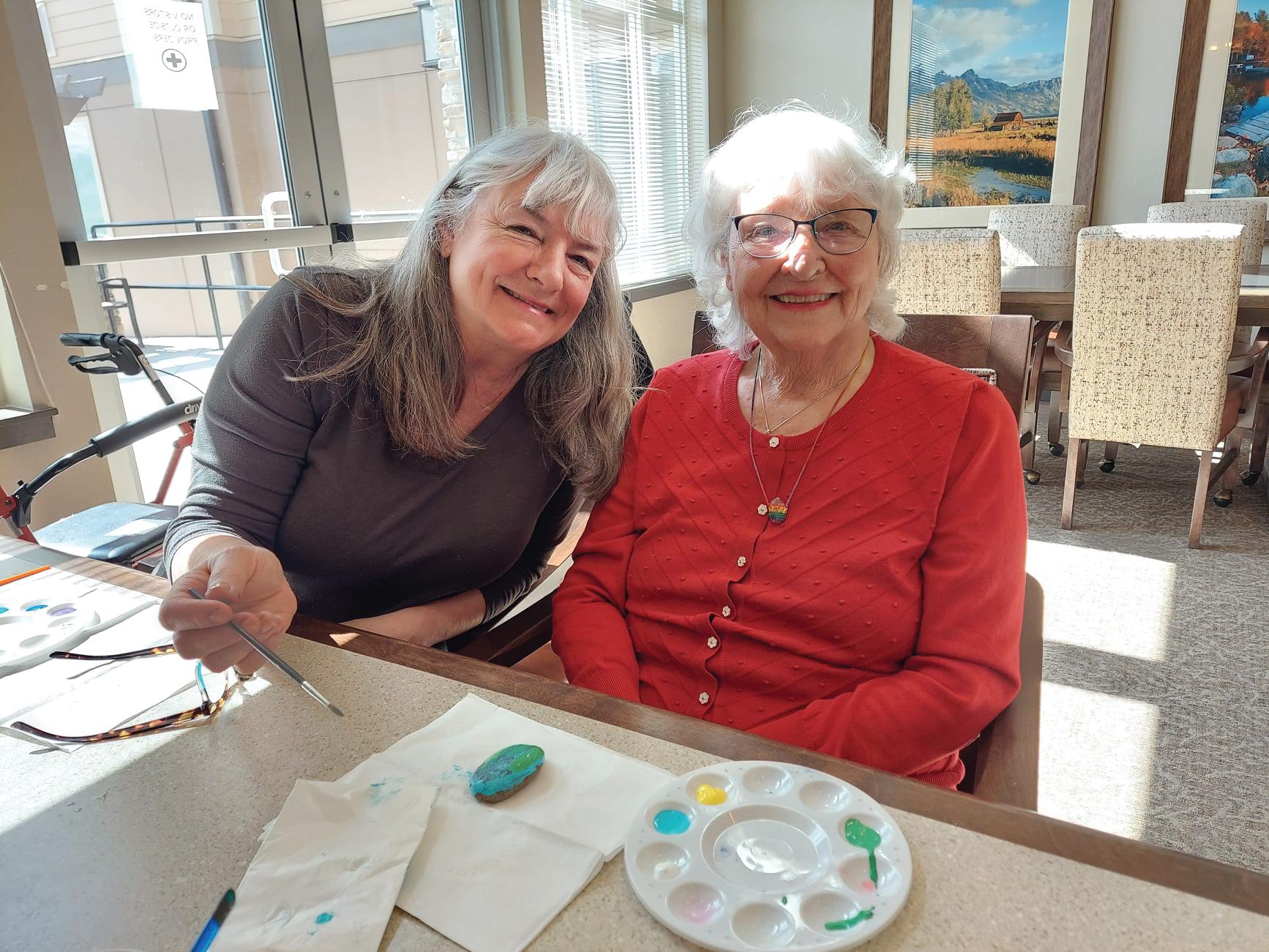








To “hack” something has become a popular term to denote implementing a clever solution to a tricky problem. It seems we are all faced with some tricky problems these days, and the challenges that accompany aging bodies and long lives are just the tip of the iceberg.
Rapid changes in technology beguile many of us, and truth be told, there’s a lot out there that can make our lives better and easier. Take Zoom for example. In her article “Zoom Aplenty” (Page 38), Ann Randall reminds us that, “As the pandemic proved, the tools and skills to access video communications technology are becoming a necessity, instead of a luxury, for senior daily living. Tele-health appointments allowing visual interaction with a medical professional, friends and family real-time video connections to minimize isolation, and easily accessible, interactive learning opportunities to maximize brain health are among Zoom’s multitude of uses.”
In “Tech Tools for Boomers” (Page
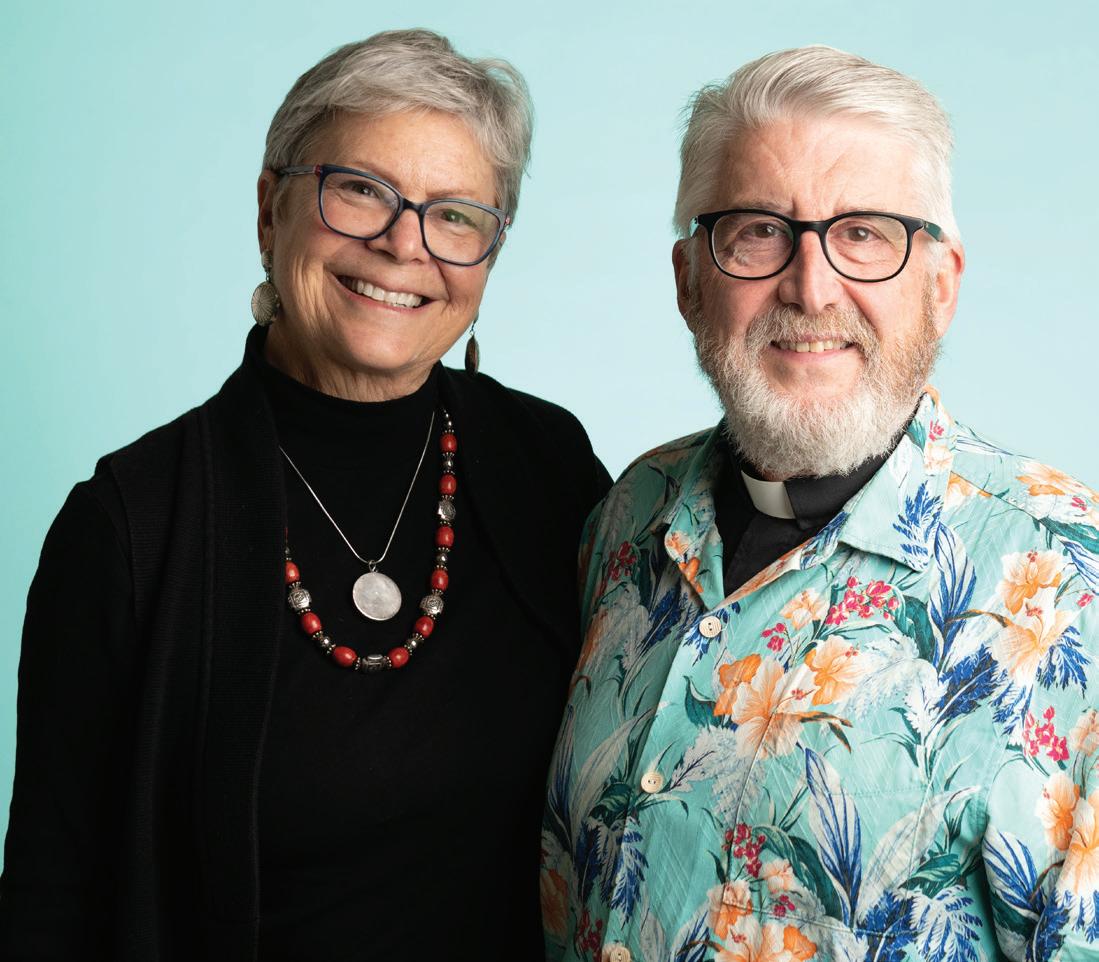
36), Connie McDougall talks with the MIT AgeLab about their research on life-enhancement technologies for older people and their families. From social robots to smart homes, to cars with increasingly advanced safety features that someday will drive themselves, new and future technology can be game-changing as we age. (That is, if you don’t have to be a tech-wizard to use it.)
But some things just can’t be hacked, and in this issue, stories about faith and ministry balance those on science and technology. We need both in our lives. When we have faith, we believe in something greater than ourselves—it’s not all about us. If ministry is about giving our time, talents, and resources to bless and help others less fortunate or in need, then there is no better role model than Rev. Rick Reynolds, the subject of our cover story, “A Loving Presence” (Page 40). Recently retired as executive director of Operation Nightwatch, Rev. Reynolds has been providing late-night ministry to Seattle’s homeless for 28 years. He challenges us to pursue meaning in retirement and consider what good we can put into the universe before we die.
I’m excited and proud of the topics we explore in this issue. There is more here than I have space to write about. So, I invite you to brew your favorite warm beverage, get comfortable, and dig in.
Happy Holidays and a Happy New Year,
Now, more than ever, older adults are viewing their retirement as a “Third Act” in their lives: A time for reinvention, connection, and engagement. 3rd Act Magazine is a bold, fresh, lifestyle magazine for older adults in the Puget Sound region. Our stories and articles challenge the worn-out perceptions of aging and offer a dynamic new vision: Let’s celebrate and embrace this stage of life, and age together with confidence.
Victoria Starr Marshall David Marshall
EDITOR Victori a Starr Marshall
COPY EDITOR Tina Potterf
ART DIRECTOR Philip K rayna
WEBSITE Philip Krayna
ADVERTI SING Dale Bohm
David Marshall

Ernie Sapiro
3rd Act Magazine wants to hear from you! Email your comments, ideas, and questions to info@3rdActMagazine.com or mail to P.O. Box 412, Brinnon, WA 98320
3rd Act Magazine is published quarterly by Oshi Publishing, LLC. The opinions, advice, or statements expressed by contributing writers do not reflect those of the editors, the publishers, or 3rd Act Magazine
Copyright ©2022 Oshi Publishing, LLC. All rights reserved.
Oshi Publishing, LLC, P.O. Box 412 Brinnon, WA 98320
Email: info@3rdActMagazine.com
For subscriptions, advertising rates, and additional information, visit us at www.3rdActMagazine.com
A Hack of a Lot Easier or a Hack of a Time
I’m excited and proud of the topics we explore in this issue.Victoria Starr Marshall with Rev. Rick Reynolds

Era Living retirement communities help you stay engaged and connected—while covering the cooking, cleaning, maintenance, and more. Featuring intellectually rich activities, exquisite dining with healthy choices at every meal, inclusive exercise classes, meticulously landscaped gardens, beautiful common spaces with rotating original art, and the supportive services you need to thrive in place as your circumstances change.
Visit eraliving.com/joy to learn more.
Locations in Seattle, Mercer Island, Renton, Bellevue & Issaquah
COVER: Rev. Rick Reynolds recently retired as executive director of Operation Nightwatch, where he spent the last 28 years providing late-night street ministry to Seattle's homeless. He considers his retirement to be a work in progress.

TECH TOOLS FOR OLDERS
technologies promise to make life easier for everyone, especially older people. CONNIE McDOUGALL
APLENTY Attending distant classes or visiting out of town friends and family is easier than ever. ANN RANDALL

A LOVING PRESENCE Rev. Rick Reynolds' quest to relieve human suffering won't stop with retirement.
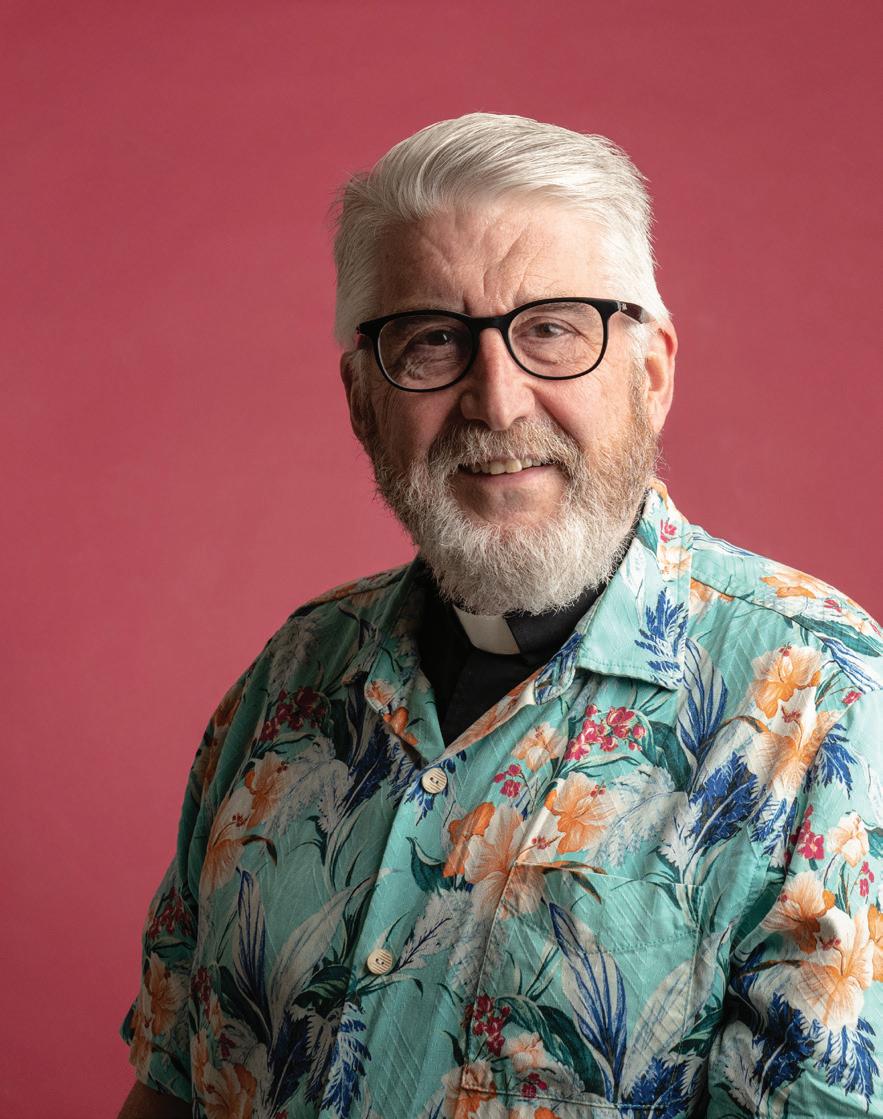
ANN HEDREEN
AT A CROSSROAD A trip to the Balkans reveals the dangers of nationalism and politically manipulated divisiveness, but also hope and resiliency. VICTORIA STARR MARSHALL
MIND THE SPIRIT What do you believe? Questions of faith. STEPHEN SINCLAIR
ENLIGHTENED AGING
expectancy or healthy longevity: Is there a choice? DR. ERIC B. LARSON
60 ON THE TOWN It's time for a night at the Seattle Opera.

MISHA BERSON
LIFESTYLE 10 RUNNING IN CIRCLES A 40-year quest to keep up with technology.
SUZI SCHULTZ GOLD 16 CRAIGSLIST GIGS Short-term jobs that offer cash and opportunities to meet new people.
JANE ADAMS 30 SUMMON YOUR SUPERPOWER How to meet this moment in history.
LYNNE ISER 44 MY THIRD ACT My invisible partner transformed my life and enterprise.
ART JOHNSON 50 EUROPE TEARS DOWN WALLS—AND BUILDS BRIDGES A successful society finds its way beyond walls.
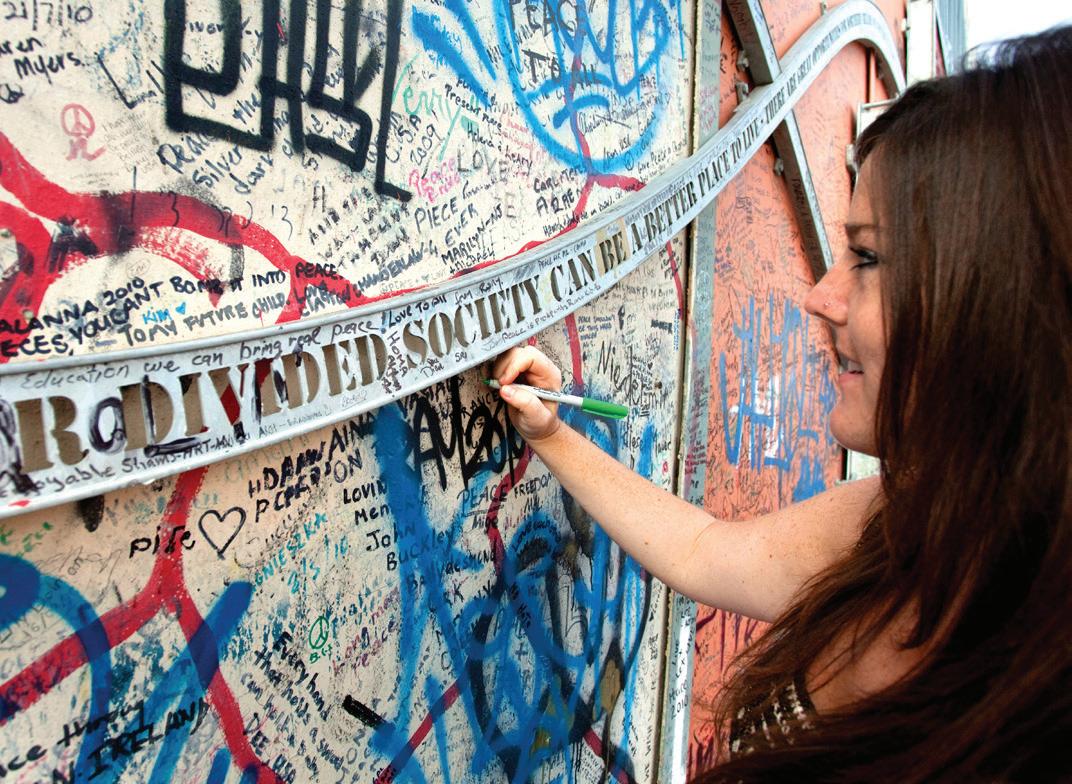
RICK STEVES
THE SUPER SONICS The band, that is. MARK DAPONTE
THE TIMELESS WORLD OF HAIKU The world through the eyes and pen of haiku master George Swede.
ROBERT HIRSCHFIELD
TURNING THE PAGE E-books can't match the tactile delight of print. JILL MODELL-DION
SOUNDS OF HEALING Safe and enjoyable ways to relax, reset your nervous system, and support your brain.
SALLY FOX
AUDITORY ATTITUDE Confronting, accepting, and managing hearing loss.

SANDRA MACLEOD
IF I SHOULD FALL Ageism is sneaky, until it sneaks up on you. CORWIN P. KING
KEEP MOVING The joy of e-biking. MIKE HARMS
NOURISH YOUR BODY Lose the bread and wrap it up for the holidays. REBECCA CRICHTON IN EVERY ISSUE
BOOKS Dancing with the Muse in Old Age by Gilda Joffe REVIEWED BY VICTORIA STARR MARSHALL
BRAIN GAMES Challenge yourself with these word puzzles. NANCY LINDE
Linda Henry writes regularly on topics related to aging, health care, and communication, and is the coauthor of several books, including Transformational Eldercare from the Inside Out: Strengths-Based Strategies for Caring. She conducts workshops nationally on aging and creating caring work environments. Her volunteer emphasis is age-friendly communities.
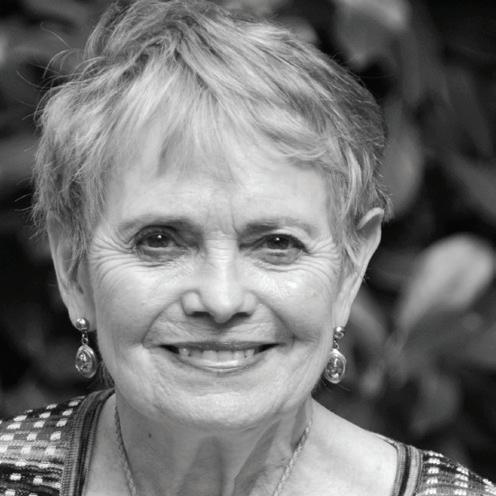
For the longest time, whenever I heard people talking about having a hack for something, I really didn’t understand what they meant. Although I know the meaning of the word, I have since learned that a life hack is often connected to an everyday task such as cleaning, where the virtues of white vinegar are exalted and where no household should be without mass quantities of this miracle product. In my search for helpful hacks, I was amazed to discover that I could organize cables with paper clips, use duct tape to open tough lids, and separate egg yolks with a plastic water bottle.
When I realized that a hack essentially is a simple and clever trick or technique for accomplishing some familiar tasks more easily, efficiently, and perhaps more cost effectively, my perception changed. And I wondered if the same principle could be used to construct a clever mental or emotional trick whenever I need an extra dose of courage, wisdom, or healing.
It occurred to me that such an approach could be as uncomplicated as gaining insight by reflecting on a story or experience, recalling a favorite quote, playing special music, meditating, or engaging in something physical. For me, stories, especially a family narrative, evoke helpful messages.
When I think of courage, I recall my maternal grandfather’s story. As a young carpenter growing up in a small farming community, finding work was difficult. Learning there were jobs available in St. Louis, he rode there from Indiana on his bicycle in search of employment. When I reflect on how courageous he must have been to undertake such a journey, his experience makes me realize that I can find courage without riding a bicycle long distance.
Given the remnants of the pandemic and society’s upheaval, I often find myself wishing for some way to experience a sense of healing. When I interviewed Lisa, an ICU nurse who frequently cared for patients at the end-of-life, I learned that she coped with loss by using her art skills to draw a picture representing the death of a patient. I am especially moved by her painting of a colorful butterfly transformed from an ordinary caterpillar.
My friend Sue was helping a young boy with his speech. He loved to draw and frequently gave her a painting when he came to a session. When his medical condition deteriorated and he was hospitalized, she found it difficult to visit him. When she finally went to the hospital, it was too late. His framed watercolor still hangs in her office as a reminder not to put off doing something important, even though it may be uncomfortable.
So, which is more useful, a hack or a mental trick? You decide. Maybe it’s both.


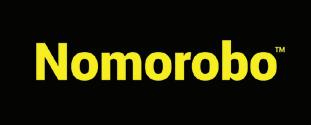


The numbers are in, and they’re headed in the wrong direction. According to new statistics from the Federal Trade Commission, Washington consumers lost more than $135 million to fraud in 2021, nearly double the amount lost in 2020.
The barrage of automated telephone solicitations or “robocalls” we get on our home and mobile phones seems to be never-ending. In fact, robocalls coming into the U.S. have more than doubled to nearly 50 billion calls a year. To make matters worse, experts estimate that up to half of these calls may be attempts to defraud consumers – and Washington state has been hit hard by this massive increase in unwanted scam calls.


To help consumers better spot and stop emerging robocall scams, AARP is partnering with the State Attorney General’s Office, BECU, Nomorobo and TechConnect to provide real-time access to the top calls flooding Washington state phone lines.
Visit aarp.org/TipOffs for early warning reports on actual calls making the rounds in your community. You’ll have an opportunity to listen to each call and better familiarize yourself with the scammers’ latest pitches before they have a chance to dial your number. Be sure to visit aarp.org/TipOffs often as we’ll be regularly updating the material! Please also take a moment to share the information with your family and friends. The better we’re all able to recognize a scam pitch before we’re in the con-artist’s sights, the better we’ll be able to protect ourselves and our money.
Marilee Clarke lives in Issaquah and loves the Northwest’s natural beauty. She is a collage artist and her passions include travel and anything creative. She and her late husband taught a course at Bellevue College on “How to get the most out of your retirement years” and that is just what she’s doing!

Whether you live in the same city as your grandchildren or they live across the country, I think it’s safe to say that as grandparents, we hope to create a meaningful connection with each and every one of them. One of the easiest and best ways to stay connected is to establish some annual traditions, which may or may not change year-to-year but seem to mean the most if they can remain a constant. Some of our family traditions include a Polar Bear Swim on January 1, Easter brunch, attending an organized family camp in the summer, blueberry picking, and a harvest festival with a cider press in the fall. We also try to fit in as many birthday parties as we can find time for! The menu is always simple but does include a sloppily iced, lopsided homemade cake (a box mix is allowed).
Since some of my grandchildren live elsewhere, I have tried to establish some special connections from afar including library hour for my youngest ones with “Mrs. Clarke,” via Facetime, and include a new book each session. I take my role very seriously, starting off with “Good morning boys and girls (even though I only have grandsons) and welcome to the Issaquah Library. I’m so glad you could join me today!” Then I proceed to read the book, study the illustrations, and ask lots of probing questions. I just love it when their little hands shoot up in the air to answer.
A good friend of mine shared a wonderful way to stay connected with her granddaughter while
traveling. She packs a small stuffed monkey (any animal will do) in her suitcase and then at each special site they visit, they position the monkey somewhere hard to find, take a picture, and then send the photo to the child for her to search and find. A kind of “Where’s Waldo” concept that she looks forward to and keeps them connected while they are away.
A great idea for older children is to plan a special one-on-one—can be with two grandparents—somewhere around their 13th birthday. It can be a simple overnight or a weeklong trip to some place like Washington, D.C., to see the sights. My late husband and I did five overnight trips and felt that they were all highly successful. We tried to add an educational component and always chose interesting accommodations, which included a yurt, a treehouse, and a “castle.”
And finally, for adult grandchildren who are away at college or live elsewhere independently, I have adopted a clever idea from another good friend. Since we may be the last generation that still has a boxful of actual “snapshots,” this one is easy. Pick out a fun photo from their childhood, adhere it to a postcard (these can be purchased online) and send off via “snail mail.” You will be surprised at how much they will enjoy and appreciate this small gesture.




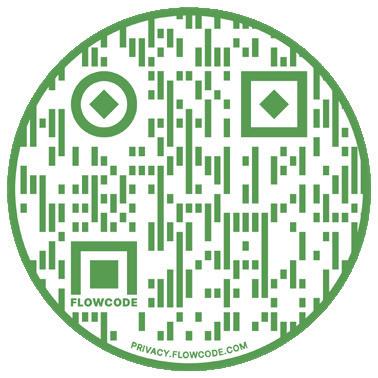
“Huh, I pondered. What is he talking about?” The newscaster was discussing something called “Bitcoin.” To me, he was speaking in a foreign language.
It is nothing new. I have been in a tech fog for years. And the cloud cover of ROM and RAM is getting denser by the day. Every human being between five and 45 has passed me by with the lightning speed of technology.
In 1983, the home computer was the “It” kid, advertised for personal and educational home use. We were in our 30s, and joined the masses trying to keep current, purchasing our first computer—
an Apple 2e. The large beige unit sat on a desk looking bureaucratic, although no one in our household had any idea what to use it for. Not to be outdone by the buzz of Gen-Xers born in the 70s, my good friend and I signed up for an introductory computer class at the local community college. We were going to learn a program called LOGO. Other than understanding it was not a class on how to design the next NIKE Swoosh, I had no idea what to expect.
According to the class description, “LOGO is a language that makes it easy for children to learn programming
by directing an object to perform a series of tasks. LOGO is specifically designed to engage kids in the four C’s: Critical thinking and problem solving, Communication, Collaboration, and Creativity and innovation.”

We weren’t kids, but this “easy and engaging” program was beyond the critical thinking skills of two collegeeducated wives a nd mothers. We learned capably how to insert the floppy disks correctly, but truthfully, we were the floppy ones. After struggling through the semester, we decided a different technique was needed to get a passing grade. We may have been slow on the computer, but we were fast with social graces.
We invited our lovely instructor to lunch after class one day and spent the afternoon praising her teaching ability.
In short, we became new best friends, until grades were locked in. It worked. We were both awarded a grade of “A,” which really stood for “Antiquated.” We were proud and touted our success.
We gave up programming and, thankfully, computers became much more user friendly. Programming was left to the young, adept dot-commers. The rest of us learned to send messages through email that was free, no less. This new technology was amazing, and we could save money on stamps and steps to the mailbox by a simple “send” stroke on the keyboard. We discovered we could also balance our checkbook on the computer, create professional presentations, make spreadsheets, and do almost anything but bake a cake.
The computer seemed invincible, great for administrative tasks. But this proved to be just the opening of the floodgates. It was beyond my comprehension that this molded plastic box could hold so much information. One day, in trying to recall a historical fact, a friend spoke up: “Just Google it.” What kind of baby talk was that? I would have been on my way to the library reference section until this techie stopped my archaic ways. In less time than it takes to find the right volume of World Book, I was able to find the answer to any question that popped up. How old was Elvis when he died? Google it! What year was the Mexican-American War? Google it! How do you treat a spider bite? Just Google it! With the peck of a few fingers, the term “encyclopedia” was replaced with “Wikipedia.”
I struggle to update my computer savvy, to rewire my brain, to learn how to use the latest applications. Just when



alien terms that could just as well be spoken in Russian:

It started when my ex-husband calmly explained the world was supposed to end on my 65th birthday. That’s precisely how he put it when we bumped into each other at a memorial service for a mutual friend.
I rolled my eyes, shrugged, and mumbled that my winter solstice birthday often was the focus of appropriations, mystical and otherwise. It’s the longest night of the year in the northern hemisphere, after all.
Then I read about 2012, the flop of a film about the cataclysmic end of the world on December 21, 2012. I decided I’d better do an Internet search for 12-21-12. I found T-shirts, ball caps, coffee mugs and other paraphernalia to commemorate my 65th birthday, plus a veritable cult preparing for nothing short of the apocalypse. There was even a countdown clock that registered the seconds until I turned 65. It all creeped me out.
I collected more gloomy particulars on 12-21-12. It seems that date was a matter of galactic alignment that marks the end of the world as we know it on the Mayan calendar.
It was a topic of much debate, however. Some said there would be a spiritual transition—a shift in human consciousness—and perhaps materialism rather than the material world would disappear on my 65th birthday. What, no presents or cake?
The truth is, everybody gets so caught up in the last gasps before Christmas that a Dec. 21 birthday gets short shrift anyway. The only well-attended birthday party I had
was for my half birthday on the summer solstice. And presents? I was numb from more than my share of two-fers—a single gift combining birthday and Christmas.
Enough pity party.
Let’s get back to those foresighted Mayans. As 12-21-12 edged closer, I checked in with Johanna (Corn) MacPherson, a longtime Seattle astrologer who sadly passed away since then.
I asked MacPherson why the Mayans didn’t pick a date with a more rarefied ring, like 12-12-12.

“Numerology is all accident, not reason. It couldn’t be as deliberate as 12-12-12,” she said.
Everything I looked forward to at 65—Medicare eligibility, the possibility of retirement, senior discounts—might evaporate along with life as we knew it.
I kept hearing astrologer MacPherson’s confident voice offering a wee glimmer of hope.
“The whole world is going entrepreneurial and you are no exception,” she said.
“You’re making this up,” I protested. “Nope,” she countered. “I’m not.”
She said it was more likely 12-21-12 would bring down commerce in some way and create a transformation of values in the years to come. I suspect MacPherson would have been amazed to watch the pandemic dry up central business districts everywhere and see workers abandon offices to hole up in their homes.
MacPherson’s uncanny prediction?
“It will be death for the commercial juggernaut,” she said. “But you, my girl, you will be the Doomsday Diva.”
In 2012 that moniker was a consolation prize, yet it helped overcome fear of an apocalypse. Then, when the pandemic began to grip the planet, MacPherson’s insightful prognostication made it a bit less terrifying to watch. And as I reach 75, I’m still alive.
Annie Culver developed a knack for unearthing oddball characters and improbable events as a staff writer for various newspapers. In the early 90s, she went to work for websites where she wrote sassy essays aimed at women. In recent years, she morphed into a writer for several universities in the Northwest. She retired in 2016, yet still enjoys freelancing.
was SASH Services founded? Is it a local or national company?
ASASH Services was founded right here in the greater Seattle area. It was inspired by my experience helping my grandfather with the sale of his home over twenty years ago.

I saw first-hand how difficult the stress, work, and expense of the home sale journey can be for older adults and their families. With adult children living out of the area or busy with their professional lives, senior homeowners often must navigate the process on their own.
BY REBECCA BOMANN OF SASHQWhat makes SASH® Services different from most real estate firms?
is a trusted elder care provider. Since SASH’s founding in 2005, our team has worked alongside the professional elder care community in a trusted circle of care for seniors and their families. Elder attorneys, social workers, financial planners, assisted living directors, and others in senior planning, support, and care refer clients to SASH for a streamlined and supportive sale of their home. This includes:
Cash advance for immediate needs: There are often pressing expenses that need to be paid before the home sale is complete, such as a need for immediate care, or a move into assisted living housing. SASH will often provide a sizeable cash advance to clients at the beginning of the home sale process so these needs can be met without delay.
Top-to-bottom services to sort, pack, and empty a home: Fifty years of belongings? No problem. SASH utilizes professional downsizers and estate sale experts, so that clients and their families don’t have to pack a single box and can monetize valuable household items.
As a licensed and insured general contractor, SASH offers update and repair services to clients. Homes with greater curb appeal sell for a higher amount, often increasing clients’ net proceeds.
SASH clients leave the pre-sale, sale, and post-sale work to an experienced professional team. With help from SASH, the home sale journey simple and low stress. Senior homeowners enjoy the benefits of working with a team who has deep expertise and proven results.

I created SASH as a blend of my own background in social work, senior care, and real estate. SASH Services provides senior homeowners with alternative home sale options that are custom tailored around the unique needs and goals of older homeowners & family.
SASH handles the work, out-of-pocket expenses, and detailed management of the sale from “start to sold,” so the client and their family can relax and focus on other things. Leading innovation in this field, SASH’s unique home sale system is patent pending with the U.S. Patent and Trade Office.
With an A+ Rating with the Better Business Bureau, and countless glowing testimonials from clients over the years, SASH conti nues to provide its home sale services to families across the beautiful Northwest. We are ready to help you.
Rebecca Bomann is founder and CEO of SASH Services, and Designated Broker of SASH Realty. Bomann created SASH to provide real estate services tailored for clients’ unique needs. Since 2005, SASH has served clients of all ages, with specialized home sale services for older adults and their families.
I once had a friend, Benny, a birthright Quaker, who had over the course of his life become an atheist. After battling lung cancer for several years, his body started to weaken, and he was put on hospice care. One afternoon as I was sitting by his bed, I asked him what he believed awaited him after death. He said he thought it would be peaceful, like lying in a mountain meadow. I then asked him what he would do after he died and saw that there was a God. He replied, “I would look him in the eye and categorically deny existence!” Benny died peacefully.
Bob, another elder friend of mine, was raised Roman Catholic, but had left the faith and considered himself agnostic. When his health began to quickly fail him, I encouraged him to figure out what he believed awaited him at death. He made attempts to do this but found it overwhelming and kept putting it off. Bob didn’t have a peaceful death.
Many of us embrace the tenets of various faiths and the theologies and doctrines that instruct one about the meaning of life and what awaits us after our time on earth. However, many people do not subscribe to any faith tradition and are atheist or agnostic. In my work as a pastor and chaplain, I encourage people to engage in the process of theology regardless of whether they believe in a deity. I stress that it is important at any stage of our lives to really know what it is we believe, something that is especially true in our later years.
Over time, I developed a workshop to help people construct their own theologies. Here are 10 of the main questions:








What moral principles guide your life?





Most everyone learns from an early age the difference between right and wrong, either by direct instruction from caregivers, through religious teachings, or by observation of the adults in their lives. We rarely think much about what ethics, morals, and codes of behavior inform our attitudes and actions. Reflecting on them and then writing them down shows us who we really are.









What is the purpose of life? Contemplating this makes it possible for one to begin to articulate one’s core values.


What is Love? Is it simply an emotion? A dynamic force at work in the universe? From where does it originate? Is it the opposite of hate or is it something else entirely? Are their limits to your ability to love unconditionally?



Do you have a Higher Self? If so, how do you connect with it? Most people sense that there is more than one aspect of what is called “I.” 5
What brings you joy? This sounds like an easy question, but often is more difficult to answer for those in the latter part of their lives who often are no longer able to do many of the thing they once enjoyed. 6

What does creation and the idea of infinity mean to you? The answer to this isn’t always easy to formulate as we often have feelings about them that cannot be expressed with words. 7
Where is God/the Divine/Greater Reality in the world? Those who are religious will have an easier time with this. However, even members of faith traditions do not subscribe wholly to the dogma and doctrine of those systems of belief.

Are there other dimensions of existence?
Children continually engage in fantasy so they can respond to this easier than adults who, for the
most part, no longer allow themselves to do this.
What are miracles? Many will say that miracles can be explained scientifically, but for those who have experienced miraculous things this does not hold true.
What happens when we die? Even religious people may not be sure and for others, it simply doesn’t matter.
These questions may sound straightforward but can be challenging for those not in the habit of selfexami nation.
Whether you’re a devout religious believer, a humanist, or a spiritual seeker, you can benefit greatly by engaging with these questions. When one knows who they are, why they’re here, and what awaits them, they do, indeed, find peace.
Stephen Sinclair lives in Seattle’s Capitol Hill neighborhood. Earlier in his life he enjoyed a career in show business while working out of New York and Chicago. A career as an ordained Unitarian Universalist parish minister and a hospital chaplain followed. Most recently, he worked with the homeless, and is a weekly volunteer visitor at the Monroe Correctional Complex.
Zen garden from the freshly-raked gravel a worm peaks Poem by George Swede

Here’s how I spent my summer vacation:
• Participated in a clinical trial for a vaccine against a respiratory virus for people over 65.







• Spent a couple of hours having my motions “captured” for an artificial intelligence project.





• Took part in three different micro-gesture studies with sensors on my hands being tracked on computers as I followed on-screen instructions.




• Brought my dog to a warehouse in South Seattle, where a camera followed both of us as we moved around a room. She sniffed and scampered and played with a toy that quickly became her favorite. Fortunately, she was allowed to take it home.

• Had my blood drawn for a cancer research project.
• Joined a mock jury to provide feedback on legal arguments in a civil suit against a contractor.
• Participated in a smartphone app study from a Texas university.










• Joined a consumer panel that pays for opinions on everything from TV shows to mobile banking.
• Recorded candidate speeches at a political picnic (and heard them in ads for the opposing candidate two weeks later!)
Here’s how much “pin money” I made: $600, plus two Amazon gift cards worth $100 each!
Not bad for a mostly retired senior, said my upstairs neighbor Kristi, who turned me on to my favorite new activity—checking out the gigs on Craigslist and finding brief, interesting jobs that offer not only cash but opportunities to meet new people, connect with a (mostly) younger crowd of techno wizards, and expand my world. Kristi scours the site daily for jobs that often involve more standing around
BY JANEthan I’m comfortable doing. She checks vaccination cards at events that require them, drives around the Sound to count pallets at Costco, waters plants regularly for people who are on vacation, takes tickets at sporting events, and signs up for studies aimed at people who are slightly younger than me, which she is. We both take a lot of “screeners,” which weed out certain demographics, but when one of us qualifies, we usually refer the other, which adds a sum to the credit cards they use to pay us.
The last thing I do at night is check the newest items on the gig list. I ignore the ones for delivery drivers, warehouse helpers and day laborers, migraine studies, and egg donors, but there’s usually a new project that I qualify for. I don't answer any postings that require me to show up alone at any place that's obviously not a legitimate business or event or office building. My rule of thumb is, if it sounds too good to be true, it probably is, and scams are unfortunately prevalent.
Last month I answered an interesting request from a man seeking someone to accompany him to an art auction, dinner, and dancing. He posted a picture of a man in his 70’s or so, but didn’t request one of me, which I thought was gentlemanly. We had a couple of email exchanges, and I dusted off my dancing shoes, but he might have been put off by my selfdescription as a “woman of a certain age,” since he didn’t contact me after that.
On a day when there’s too much white space on my calendar and too little pin money in my checking account, www.craigslist.com/seattlegigs is the place to be.
Jane Adams, PhD, is a writer, coach, and social psychologist. She is the author of 12 books, including When Our Grown Kids Disappoint Us, and a contributing writer for Psychology Today.
How to find brief, interesting jobs that offer cash and opportunities to meet new people.
ADAMS

Are we getting any closer to effectively preventing or treating dementia? Unfortunately, not.
We should be closer. Researchers have provided us with the information we need to protect our brains. We understand the risk factors. We know the conditions that protect our brains and build their resilience. Why haven’t we leveraged these positive approaches? Follow the money.

Unfortunately, successful interventions are socially complex and offer big business little opportunity for profit. The Alzheimer’s industry has chosen to pursue simple solutions that offer the promise of sustainable profits to those who can find and manufacture the “magic pill.” This myopic approach results in unwavering faith in failed approaches and dismissal of viable alternatives that stray from the accepted orthodoxies.
To make matters worse, the pursuit of profit over people corrupts
the practice of good science. Neurodegenerative diseases are complex conditions that are not easily solved. In search of the quick dollar, too many are tempted to take shortcuts that lead down the rabbit holes of fraud, corruption, and quackery. Here are some telling examples: Fraud! Recently, the field of Alzheimer’s research was shaken by allegations that an important piece of seminal research was fraudulent. In 2006, an up-and-coming French researcher Sylvain Lesne, while working at the University of Minnesota, published an influential paper in the prestigious journal NATURE. Lesne reported that he and his colleagues had discovered a subtype of the Beta Amyloid protein (AB*56) that accumulated in clumps and caused dementia in rats.
This was considered a big deal. Lesne’s finding has been described as the “smoking gun” evidence that
confirmed the amyloid hypothesis, which posits that Alzheimer’s is caused by the accumulation of abnormal Beta Amyloid. Unfortunately, Lesne used doctored images to prove the existence of AB*56. The only other researcher who tried to replicate his research found no evidence of the new form of amyloid and subsequent investigation indicate quite clearly that Lesne’s documents were altered. Lesne succumbed to the need to publish positive results to bolster his reputation and attract funding.
The Alzheimer’s industry was too eager to accept a result that confirmed their preferred paradigm—the amyloid hypothesis—and failed to catch the fraud in a timely manner.
Corruption! Recently, the FDA approved the distribution of Aduhelm, the first new Alzheimer’s drug since 2003. Aduhelm is based on the amyloid hypothesis—get rid of amyloid a nd you control dementia. But the evidence shows that Aduhelm provides minimal benefit, if any, and has some serious side effects such as bleeding in the brain. Despite vigorous opposition from independent experts, the FDA granted its approval. Why?
Pursuit of the amyloid hypothesis has become an industry that is too big to fail. Billions have been invested. Careers and reputations have been built around the approach. It is too difficult—and too expensive—to admit failure and start over.
Biogen, the maker of Aduhelm, is under investigation by both the FDA and the SEC for corrupt “marketing” of their drug. There are allegations that FDA officers were improperly encouraged to approve the drug despite expert advice to the contrary. The potential for big profits, unfortunately, leads to corrupt practices.
Quackery! Since people are desperate to ameliorate the negative
effects of aging and dementia, charlatans are quick to offer sophisticated versions of well-marketed snake oil. The sale of unregulated supplements is a $40+ billion dollar industry, with brain health supplements making up an estimated 10th of that market.

Prevagen is a supplement made from jellyfish of all things. It claims it can improve memory, support healthy brain function, sharpen the mind, and lead to clearer thinking. Their ads feature sincere older people who are paid by Prevagen to tell stories about how it has helped improve their cognition. There is not a shred of valid evidence that Prevagen provides any of those benefits. The FDA and the New York Attorney General sued the makers of Prevagen over their false claims, but the case has been tied up in court for years. No supplement has been shown to effectively prevent or treat dementia.
Brain problems are called neurodegenerative conditions because they involve the degeneration of brain cells. Brains falter when brain cells stop working properly. And brain cells get damaged and disrupted in myriad ways, including unhealthy conditions inside our body and unhealthy conditions in external environments. Until recently, there has been little political interest in cleaning up our environment, although there is clear evidence that things like lead in our drinking water and particulate matter in the air we breathe are significant risk factors for dementia.
The weight of scientific research has, for quite some time, pointed toward lifestyle and environmental conditions as having a profound impact on the health of our brains. We know what to do to lower the risks and to amplify the protections. Why don’t we all adopt healthy behaviors and work

together to clean up the planet that supports us? We don’t adopt healthy lifestyles because change is hard and big business doesn’t make it any easier for us. Large corporations make billions selling processed foods, manufacturing plastics, burning fossil fuels, and profiting from treatment rather than prevention. Politicians are corrupted by funding from big business so they fail to legislate the measures that could protect us from inevitable damage to our brains.
So I’m not optimistic that the incidence of dementia will diminish in years to come—unless we can make some dramatic changes to the way we protect our brains and manage our minds.
Michael C. Patterson is the host of the MINDRAMP podcast and has recently launched a new series of podcasts called MIND OVER MUDDLE. Michael ran the Staying Sharp brain health program for AARP, is the CEO of MINDRAMP, and publishes the newsletter, Roadmaps for a Successful Longevity.

 BY ERIC B. LARSON, MD, MPH
BY ERIC B. LARSON, MD, MPH
Were you surprised by recent headlines that for the second consecutive year, U.S. life expectancy decreased? For hundreds of years, and especially in the 20th century, improvements in life expectancy were the norm. Mortality rates between 1970 and 2013 decreased by 44%. However, ominous trends began to appear as we marched into the new millennium when the number of premature deaths in mid-life, nonHispanic whites unexpectedly began to rise.
related to Sweden’s decision to avoid lockdowns and social isolation. The 2021 decrease in life expectancy will prove to be less a direct effect of COVID infections, as vaccines became available early that year. Rather, it likely reflects effects of isolation and lower life expectancy in under-resourced, impoverished groups. Native Americans comprise the group with the greatest decline.
Participants in our long running Adult Changes in Thought (ACT) study—with high vaccination rates and adherence to testing and isolation—experienced very few COVID deaths. However, they experienced more depression, loneliness, and overall loss of well-being during the pandemic.
Declining life expectancy and its causes are clearly important issues for public health and public policies. But what do they mean for us as individuals who aim to age well?
Eric B. Larson, MD, MPH, is the author, with Joan DeClaire, of Enlightened Aging.
He is the founding principal investigator of the Adult Changes in Thought (ACT) study, ongoing for about 30 years. ACT recently was awarded a $55.6 million expansion grant from the National Institutes of Health.
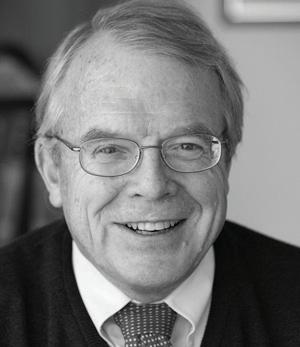
Princeton economists Anne Case and Angus Deaton point to increased “deaths from despair” (suicides, drug and alcohol overdoses, and alcoholic liver disease), which occur in communities with limited economic opportunities. The economists cited rising inequities in counties without countervailing social support programs. And premature deaths in mid-life are now twice the rate in those without post-high school education.
The lifespan declines in 2020 and 2021— during the pandemic—are different. First is the direct effect from millions of COVID infections causing disproportionate deaths among the frail and most elderly. Sweden had headline-grabbing news from high death rates in long-term care facilities and in persons with Alzheimer’s—
Most people (older and younger) do want to live a long life. Increased longevity is a both a triumph and blessing of our times. But what most people want is a longer active life—avoiding long periods of dependency and dysfunction.
For individuals at any age, but especially older persons, the goal to pursue is healthy longevity through regular exercise, control of cardiovascular risk (especially maintaining a healthy blood pressure), avoiding excessive alcohol, not smoking, staying engaged in challenging mental undertakings, and maintaining an active life that includes social, spiritual, and other contemplative activities. It’s the usual list, but unfortunately not all that usual in many people’s lives.
The consequences of the pandemic and declines in life expectancy are not surprising. My hope is this will trigger greater awareness of social determinants of health and the absolute necessity that we address them, especially the need for universal high-quality education, and correcting widening economic disparities.
As individuals, we can still expect long lives, enjoying the historical gains in life expectancy. Remember what Eubie Blake, Mickey Mantle, and others have said, “If I’d known I would live this long I would have taken better care of myself.”

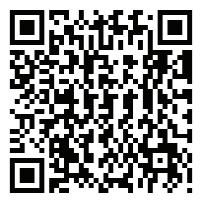
Imagine if you could experience deep relaxation, reset your nervous system, and heal your brain while lying comfortably on your bed or in a chair at home. And what if you could extend your longevity, protect your mind, and improve your quality of life by just opening your mouth?
Welcome to the world of sound healing and the magic made possible by music, rhythm, and sound. Our human connection with music dates back at least 42,000 years, as evidenced by flutes made of bird bone and mammoth ivory discovered in Southern Germany. Our ancestors used song, drumming, and chanting in healing rituals. And Indigenous Peoples and religions around the globe have incorporated music, singing, and chanting into their ceremonies.
While the use of music and sound in rituals and ceremonies go back many millennia, science has been slow to discover the how and why of sound healing. Today, that may change as doctors and scientists search for non-pharmaceutical ways to improve our health and support the brain.
Given the stresses of the world, the brain benefits of sound are more needed than ever. The aftereffects of COVID, worker shortages in many industries, and economic and environmental challenges have led many to depression, burn out, and brain fog. Could music and sound help
restore a sense of balance and brain functioning? The evidence suggests yes. In one Swedish study, a group of burnedout employees achieved more significant, longer-lasting results listening to a specially designed music program than a comparison group receiving the standard psychotherapy intervention.
Other studies suggest that music may stimulate neural activity among Alzheimer’s patients and older adults who learn to improvise on the piano may improve their cognitive flexibility and executive function. Singing may help improve cardiovascular health in older patients with cardiovascular disease. And music may be useful in pain control.
To expand the scientific understanding of the health benefits of sound and music, the Sound Health Initiative was launched in 2016 under the leadership of the internationally acclaimed soprano Renée Fleming and Dr. Francis Collins, then-director of the National Institute of Health (NIH). In 2019, they were awarded a $20 million NIH grant to support a clearinghouse of existing cross-disciplinary research on sound healing and new studies in the field. Given the potential applications of this data to older adults’ mental and physical health, we owe a “Bravo!” to Fleming and her colleagues.
My exploration of sound healing began during the pandemic when I learned about the work of the late Alfred Tomatis, a French doctor who explored the importance of what we hear on our brains, behavior, and voices. For him, sound was a “nutrient to the nervous system.” Reading about Tomatis and the field of psychoacoustics he helped found, I wondered if my non-correctable hearing loss might affect my attention and focus. I purchased a Tomatisinspired music program online called
“The Listening Program” from Advanced Brain Technologies (ABT).
To use it, I put on a headset for a short period daily and listened to classical music modified to support brain performance. The experience was enjoyable, and my coordination and focus improved within a short time. ABT’s rhythm program, called “InTime,” helped tune my internal sense of beat and balance as I listened to original percussive sounds from around the world. Even after completing the programs, I used them as go-to tools when I felt stressed.
I asked Alex Doman, founder of ABT, how their programs and other sound healing approaches compared to meditation when it came to brain support. Doman was quick to endorse the benefits of meditation but reminded me that meditation requires effort, and for those who are very stressed, any extra effort may feel like too much. Listening to sound and music, however, is relaxing, rewarding, easy to do, and may enhance our ability to meditate.
benefits of allowing dementia patients to listen to a playlist built from their favorite tunes. When we’re feeling down, music can offer us emotional support. Perhaps we pick pieces that match our mood and give us comfort. Or maybe we choose tunes that help us shift our mood. Either way can help.
Relax with sounds baths and sound ceremonies
suggests yes.
Doman further suggested that working with music and sound healing is almost always safe, unlike some pharmaceutical interventions. So even if research hasn’t yet pinpointed how sound and music affect the brain, you can experiment today and discover what works best for you.
Here are other approaches I’ve tried and recommend: Listen to your favorite music While using neuro-acoustically modified music like The Listening Program may have particular benefits, many of us find happiness just listening to a favorite piece of music. Studies have documented the
You can search YouTube for “sound bath” recordings, offering deeply relaxing environments created with crystal and Tibetan bowls, gongs, and other instruments. Put in your earbuds, cover your eyes, and enjoy an effortless, meditationlike experience. After reading The Healing Power of Sound: Recovery from Life-Threatening Illness Using Sound, Voice, and Music by the late Dr. Mitchell Gaynor, an oncology physician, I became fascinated by how he used crystal bowls along with conventional therapies to improve outcomes for his cancer patients. Inspired by his success with the bowls, I bought one to enjoy at home.
Our 24-7 Internet-obsessed world can lead us far away from the natural rhythms of life. From my experience, listening to beats or drumming provides a natural tune-up and system synchronizer. Parkinson’s patients were shown to improve their gaits and motor skills by working with a metronome or drumbeat. You can enjoy the benefits of rhythm by joining a drum circle or buying a small drum and studying drumming online. Reset your nervous system with humming
Everyone can hum, and humming has
Could music and sound help restore a sense of balance and brain functioning? The evidence
some surprising benefits. According to authors Andi and Jonathan Goldman, humming may help lower blood pressure and heart rate, increase lymphatic circulation, and release endorphins and oxytocin. I find 10 minutes of humming in the car much better for my nervous system than listening to the news!
Find joy through chanting
Spiritual groups have practiced chanting over centuries. Still, I never understood the healing benefits of chanting until I had an opportunity to join a kirtan, a session of devotional singing. After about 15 minutes of chanting, my voice melded with others in the room, and I was lifted into an experience of collective joy. Try a round of chanting online with vocalist Krishna Das or others who lead kirtan singing.




The benefits of singing include improved breathing and better use of respiratory muscles—and it has been helpful to people
help the speaking ability of people with Parkinson’s or aphasia following a stroke. Singing is my favorite mood booster. I can’t feel stuck or cynical after singing.

Research has shown group singing can reduce stress levels and depression, regulate heart rate, release endorphins, and lower pain thresholds, among other benefits. Choral singing also increases feelings of social connection.
All the above activities are pleasurable, available at low cost or no cost, and no further away than your voice and body. They may help speed recovery, protect your brain, and increase longevity. We may not yet know precisely how music and sound healing works, but if Renée Fleming and her colleagues at the Sound Health Initiative succeed, science may start catching up soon with what people have known through the ages: Sound heals.
Sally Fox, PhD, is a life transitions and creativity coach and author of Meeting the Muse After Midlife: A Journey to Joy through Creative Expression, to be published in early 2023. Find her at www. engagingpresence.com.
Maslow’s Hierarchy of Needs illustrates five ascending physical and psychological levels of need that lead to a life of fulfillment and ease. At the base of the pyramid are things we need to survive such as food, water, and shelter. Second, we seek safety and security. Next is what gives us a sense of belonging and love. These first three steps are essential for wellbeing as we age. However, while researching senior living, you’ll miss the opportunity to thrive, as opposed to just survive, if you base your decision on just these first three levels.
At the higher levels of Maslow’s hierarchy are esteem and selfactualization. It’s here that life is not only easier, but also becomes more fulfilling and enjoyable.

Esteem, or respect for yourself and others, is felt when residents are proud of their
home and want it to succeed.
At Quail Park of Lynnwood, one way we support esteem is by fostering a community whose personality and culture reflects our residents, employees, families, and supporters. For example, we recently took part in the annual Walk to End Alzheimer’s. Participants included residents, staff, and family members. Those who couldn’t walk donated to the team in other ways. It brought us together as a family instead of just individuals sharing a home. Self-Actualization, or realizing
your full potential, is the pinnacle of the hierarchy. You’re pursuing your passions, feel happy, and are content. What things make you feel fulfilled? Travel, volunteer work, time with loved ones, exercise, reading, learning something new? When researching and visiting senior living communities, look beyond the basic needs and ask how they’re fulfilling the higher needs that help us all to age well and easier. Things like educational speakers, book clubs, advancements in technology, music…whatever you are seeking to reach those upper levels on the hierarchy.
Any senior living community can provide the basic needs. Quail Park of Lynnwood reaches higher. Don’t forget to reach for the top and fulfill your desires as well.
Although I sometimes wish for a cure that would let me hear normally again, hearing loss has brought unexpected gifts into my life. I admit this grudgingly. Losing my hearing is an unwelcome—and often painful—experience for me.

I first noticed I was missing some everyday sounds and people seemed to be mumbling. This began some 20 years ago while in the throes of a hard-won career working with individuals with disabilities and other marginalized people. My work was meaningful and important to me. The fear I might have hearing loss—and its possible effect on my ability to do my work—hit me with a wave of anxiety and uncertainty. I postponed a hearing test for months before taking the plunge. Finally, sitting in a soundproof booth, I strained to hear the tones and sounds of the hearing test as well as I could. When it was over, the
technician shrugged off my questions and simply told me I needed hearing aids.
My hearing loss has gradually increased over the years, and I continue to strain and push myself in those hearing tests as if the outcome will make it easier for me to hear in the real world. The cruel reality of hearing loss isn’t that voices aren’t loud enough to hear, it’s the nuances of speech that can be missed or misinterpreted. Even wearing high tech, expensive hearing aids, which take time getting used to, I’m dependent on reading environmental cues, or lip reading. Background noises, someone speaking who has an accent, someone whispering, and riding in a car are stiff competitors in what feels like a contest to carry on a basic conversation. I must accept that no matter how hard
I try, there are situations where I’m not going to hear or hear as well as I want to.
I continued to work for many years and was able to meet my clients’ needs and concerns, as well as participate in meetings with parents, caregivers, staff members, and colleagues. I felt I had accepted my hearing loss and successfully managed how it affected my life. But I didn’t anticipate my hearing would continue to get worse.
At first, I was able to manage using well-worn strategies of lip reading and by letting others know—even though I wore hearing aids—I had trouble hearing some things. I would say things like, “I want to be sure I’m hearing you, could you say that again?” Or repeat what I had heard them say. Despite these and other tactics, I feared what people thought
of me. I’d feel embarrassed and that somehow this was my fault—I wasn’t trying hard enough. Being completely identified with my role as a competent, highly trained professional didn’t leave room for self-doubt and feels of worthlessness.
I started playing it safe so there was no risk of embarrassment or feeling left out by skipping meetings (the work that connected me to others), avoiding talking with colleagues, and keeping questions on an interesting talk to myself, lest I give away that I didn’t hear something.
When an old friend I hadn’t seen in many years became impatient with having to repeat something she said to me, and got annoyed at having to face me when she spoke or say something another way, I was hurt and angry. But I also became curious about what was happening. Slowly, it dawned on me that her impatience mirrored my own. I was impatient with myself when I didn’t hear, and I didn’t show myself enough compassion in my struggle to stay connected.
Seeing through my friend what I was doing to myself, I was able to step back and reconsider the path I want my life to take despite hearing loss. Do I want to stick with what is familiar and comfortable? Or do I allow myself to be a whole person who happens to have hearing loss? Fear, embarrassment, and feeling dismissed may still accompany me, but I can choose to listen to my heart and passion rather than the raspy voice of my inner critic. The choice is mine, I can hear it.
Sandra MacLeod is an educator and clinician who works with individuals with disabilities, chronic health concerns, and dementia. She is passionate about creating positive environments that foster well-being and growth. She loves trail running, hiking, and kayaking on the beautiful Olympic Peninsula in Washington, where she lives with her husband and three cats.
Avoiding treatment for hearing loss can keep us isolated from others, but it has a bigger cost in putting us at risk for dementia. According to research conducted at the Johns Hopkins School of Public Health, hearing loss is one of the major, but modifiable, risk factors for dementia, yet only 15-20% of Americans who have hearing loss seek treatment. If you have hearing loss, hearing aids can help reduce your risk of dementia by keeping you socially connected, and your brain stimulated and active.
The process of finding a hearing aid provider and managing the fears and judgments that may come along for the ride can be daunting. Here are some suggestions to get started on your path to better hearing and brain health:
See an Audiologist: If you suspect that you may have hearing loss, see an audiologist who is an expert, often a doctor of audiology, who diagnoses hearing loss and helps you select a hearing aid. The audiologist is a key player in helping you hear better, so look for someone you feel comfortable with and who listens to your needs. Referrals for an audiologist come from friends, an Ear, Nose & Throat specialist, or your health care practitioner. The audiologist uses a hearing test indicating sounds you can and cannot hear to diagnose your hearing loss and help guide your choice of hearing aid.
Customizable Hearing Aids: Customizable hearing aids are programmed base on hearing needs according to your hearing test and lifestyle, as well as controls keeping you hearing well whether you are in a noisy restaurant, playing bridge with friends, or listening to your granddaughter telling you about her day. These features make customizable hearing aids more expensive but essential for helping you hear consistently better no matter where you are.
Note: Over the counter (OTC) hearing aids for milder hearing loss can be less expensive and more accessible than customizable hearing aids. OTC hearing aids may have some drawbacks for your hearing loss and may not be returnable, so it’s wise to get as much information as you can before purchasing.
Don’t Hide Your Hearing Loss: Your new hearing aids will feel awkward at first and the sound quality will differ from your natural hearing, but using them in your normal routines and activities helps you adjust to a new way of hearing. You may be tempted to hide your hearing aids, but instead, tell others starting with friends and family that you’re wearing hearing aids but may still miss some things. You will. You may feel impatient with yourself and your hearing aids but instead of buying into these messages from your inner critic, turn toward who and what you care about and why you want to hear.

Many years ago, I walked past the house of an elderly lady on my way to work. One winter morning I saw her sitting on her porch steps with a couple of people gathered around. “I fell! I fell!,” she was shouting, obviously scared and confused.
“Too bad,” I thought. “I guess that’s what happens to old people who aren’t careful.”
Now, it’s happened to me. Walking to the alley behind our house, I slipped on an icy step from our deck and fell hard on my bottom. As soon as I knew I could move my legs, I crawled back up the steps and grabbed the deck railing.
That’s where my wife found me, head down, dizzy, breathing heavily, and sweating in the 20-degree weather. “I fell,” I said, still trying to get my bearings. “I slipped and fell.”
I got into the house and sat down. I was pretty sure I hadn’t broken anything, but every joint in my body felt shaken. That was the beginning of weeks of pain and uncertainty.
We had a trip planned in a few days, and I was determined to go. With the help of lots of Tylenol and a seat cushion, I endured the six-hour flight to our destination and the car ride to our rented condo. But I
was stiff and couldn’t walk far and turning over in bed was agony.
I spent most of the trip sitting in soft chairs with an ice pack. I tried to play golf a couple of times, but couldn’t swing a club, so I mostly rode around in the golf cart. One night, we went to a concert where I spent half the time leaning against a wall to ease my back.
The worst thing, though, was the fear of falling again. I thought I was in good shape for my age (79), but now I was unsteady on my legs. My balance was off. I feared walking on uneven surfaces. Every wet leaf, every muddy place in my path was a potential hazard. I went up and down stairs slowly, watching my feet and holding onto bannisters.
Eventually, the pain went away, and I regained my confidence. But it left me with a new respect for people you see shuffling along with walkers or canes for support. According to the website PubMed, more than a third of all people over 65 fall every year, and in half those cases the falls are recurrent.
Some falls are caused by unsafe environments (slippery steps), but most come from medical conditions, cognitive or vision problems, declining muscle strength, side effects of medications, or substance abuse. Regardless, the World Health Organization estimates that in the U.S., 20-30% of older people suffer moderate to severe injuries due to falls. In many cases, the falls lead to the thing most dreaded by older people—permanent disability and a loss of independence.
Falls can happen to anyone, often when they’re least expected. Being aware of that is the first step to preventing them. Taking simple precautions like watching your footing is the second. You can’t be too careful, after all.
Corwin P. King is a retired university professor now serving as an adjunct faculty member at Pacific Northwest University of Health Sciences in Yakima. His articles on health and other topics have appeared in The Seattle Times, Seattle Post-Intelligencer, The Christian Science Monitor, and The Mensa Bulletin. He lives in Ellensburg.
Iwas on the verge of taking my first e-bike ride. I strapped my helmet on and I walked my e-bike for one block.
I had scheduled a test ride at G&O Family Cyclery in Seattle. One of their helpful bike pros suggested that I should start my ride a block west of the shop, on a quieter street. I think she could tell I was a little nervous.
“You’ll feel like you’re riding with a superpower,” she said, with encouragement. That sounded fun.
I started pedaling on a sleek Gazelle Ultimate C380. The first few pedal strokes felt familiar. Then, whoosh, the electric assist kicked in. I surged forward. Sure enough, it did kinda feel like a superpower.
In a New York Times column titled, "How an E-Bike Changed My Life," Jennifer Finney Boylan wrote:
“Cycling, like everything else, has gotten harder as I’ve grown older. … Since I got the e-bike, though, I’ve been riding 15 and 20 miles a day, four or five days a week. It’s been life altering, not just making me fitter, but also raising my spirits, getting me out of the house and back into the mountains.”
That column appeared in August 2019, prior to the pandemic. Since then, e-bike ridership surged during COVID. E-bikes were the number-one selling electric vehicle in America last year, outselling electric cars, according to Bloomberg. If you’ve been thinking about getting an e-bike, here are three things to consider:

1) An e-bike can help us stay active as we age. The “e” in e-bike stands for electric assist. It provides power when pedaling, to help riders climb hills, keep pace with other riders, accelerate around obstacles, and ultimately reach their destination.
My personal training client Terry who’s 69, varies the intensity of his e-bike rides with some unassisted intervals. “Get an e-bike with gears so you can shut off the power and sweat until you get tired of sweating,” Terry says. “Then you can turn the power back on and make it easier on yourself for a while.”
2) Try before you buy. An e-bike is a significant purchase. The models that I tested ranged in price from $1,999 to $4,199. You’ll get the most for your money by visiting different shops, speaking with their experts, and testing different bikes.
“Test drives are a must,” Terry says. “Ask about the bike’s maintenance needs and the seller’s service department.”
3) Some safety considerations. “Just a word of caution,” Terry says. “E-bikes generally weigh more and go faster than non-e-bikes.”
The e-bikes that I rode ranged in weight from 48 to 64 pounds. By comparison, my standard bike weighs about 33 pounds. When it comes to speed, e-bikes typically provide assistance up to 20 or 28 miles per hour, so invest in a good helmet and remember to wear it.
Terry and his wife, Mary, both ride e-bikes. Mary got hers first. Terry saw how much fun she was having and now, he’s hooked.
“I can ride with younger, fitter riders,” Terry says. “I can go farther and higher. I can turn off the power and use my seven standard gears to get a workout. …Best of all, it has a horn.”
Mike Harms is an author, personal trainer, and owner of Muscle & Hustle gym in Seattle.
Do you recall the story that circulated on the Internet a while back about a mother who lifted a car off her teenage son and saved his life?
Even if this was just an urban myth, the idea that I might possess adrenalinepowered strength to save a life resonates for me. I wonder if I could I do that. If I was there, I would want to save that child. Wouldn’t you?
As you consider our moment in history, with our democracy and planet in peril, do you struggle, like me, to find the strength to do the heavy lifting?
When I hear young adults say they don’t plan to have children because they fear the future, the weight in my heart feels nearly insurmountable.
Many of us are scared. We don’t sleep
well at night. We’re exhausted. We find ourselves avoiding the news. Yet, we face difficult and crucial questions. What do we owe the future? What will be the legacy of our lives?
While I don’t have all the answers, I would like to share a strategy grounded in insights from Joanna Macy, a dear friend and teacher that builds my inner strength and resilience. From her, I learned we do not live only in this present moment, but that we live in the “ongoingness of time.” Our existence is tied to those who came before us and the choices they made just as our lives are the foundation for future generations. My ancestors made decisions that led to my current life and circumstances. In turn, I imagine the voices of my great, great,
grandchildren—the “future ones”—in my ear and in my heart, urging me to consider their needs as I make choices today.
When you struggle with the sometimes overwhelming, yet essential, task of advocating for a better future, your ancestors, future generations, and the natural world are your hidden allies. To access their strength, use this 5-minute exercise. Grab a pen, paper, or perhaps your journal. Give yourself 10 to 15 seconds to jot down what comes to mind for each item on the list below. Don’t overthink the categories. Allow names and images to easily arise. When you’re ready, take a deep, cleansing breath and write:
• The names of three ancestors, related or not, who have impacted your life.
• Three people—alive now—who are important in your life.
• A place in the natural world that has brought you joy, serenity, or awe.
• Another place in the natural world that is important, that you treasure. It could be your backyard, a neighborhood park, or the Grand Canyon.
• An animal, domestic or wild, that you find amazing, interesting.
• A child whom you love.
Look at your list. These are your allies! They live within you and you can call upon them when you feel stuck. Don’t forget them or take them for granted for they can be a source of strength, passion, and purpose.

During those dark nights of the soul, access this hidden strength from your ancestors and descendants, this deep time that goes beyond your personal experience. Read memoirs of people who have lived through wars, oppressions, or other difficult moments in history. Even if you are not a descendant, their experience can add to your own resilience.
I sometimes restore my energy with memories of how my grandparents coped with hardships. My mother’s family came from what is now Ukraine. When they left their home in the late 1800s, they left behind their family and lives, knowing they would likely never return. Their courage made it possible for me to live where I do, in a home that is safe and secure. I keep pictures of them, and other allies around my home, that remind me that my life is much bigger than just myself.

Best of all, summoning your allies can be magical and a lot of fun. You can have conversations with your descendants. Even give them names if you choose. Call upon them to be with you as you walk into an important city council meeting and know that you are speaking for their
lives, as well as your own. They have no faces, no names. Yet, the decisions we all make will affect their lives—whether they will be able to breathe clean air, drink fresh water, and enjoy the fruits of the land in that unknowable future.
Our allies are not just other human beings, but as we’ve noted in our journaling exercise, they can be a special place in the natural world that provide awe, inspiration, or comfort. Or animals with whom we feel a special connection that open us to the nonhuman experience. Or, we can embrace our “ecological self,” recognizing we are a part of the living body of Earth. This ecological self opens us to an enduring, energetic life force that is available and can power our human selves. I sometimes take a moment when outdoors to imagine myself breathing with the trees. As I breathe in, they breathe out. Together we are life, breathing itself.
To my great, great grandchildren, I offer my hopes and my dreams, and send them my love in the form of activism on behalf of their lives. While I know that none of us are equipped to solve the world’s problems, I trust that if we join forces to advocate for the well-being of future generations, that’s the least we could and should do.
You may ask yourself, “Who am I to think that I can take on the problems of the world? I am only one, small person.” As Martin Luther King once wrote, “It really boils down to this: that all life is interrelated. We are all caught in an inescapable network of mutuality, tied into a single garment of destiny. Whatever affects one destiny, affects all indirectly.”
Lynne Iser is President of Elders Action Network. Her passion is to engage elders in addressing the critical issues that keep us up at night and threaten our precious world. She previously co-founded the Spiritual Eldering Institute (sage-ing.org), with Rabbi Zalman Schachter-Shalomi. Currently, she facilitates the work of Joanna Macy's and teaches workshops for Yerusha Sage-ing® Legacy Program.
Looking for a strong supportive community as you age? Here are some tips for creating one that will meet your needs. by Jeanette Leardi
We humans are basically social animals and so it’s no mystery that we need and want to be around others who will support us throughout our lives, especially in our later years. Scientific evidence reveals that older adults who live in supportive communities live longer, healthier, and richer lives.
At the same time, we also value our independence and self-sufficiency. According to AARP, 77% of people age 50 and older want to remain in their own homes or apartments, which is fine as long as we can continue to meet our economic, health, and social needs. Among the most important challenges are retiring from or losing employment, decreasing sight, hearing, mental capacity, and/or mobility, and losing family members and friends to relocation or death.
Most likely you feel this need to maintain your autonomy, too. If so, it’s important to determine how you’ll enlist the help of others to see you through unexpected situations such as an illness or injury. Who are some of the people you can turn to, especially if your family isn’t nearby or otherwise an option? What specific things could
they do for you? How can you start this planning process?
Fortunately, two experts have answers to these questions.
Who’s in a Community?
“Every person has a need for community, for positive interactions with other people,” says Wendl Kornfeld, founder of the Community as Family education model. “As a society, we should recognize that and do our best to make it possible for everyone.”
That’s a good way to describe Kornfeld’s mission. She helps adults without the support of close family anticipate the changes of later life, identify critical resources, and create a personal team from among friends, neighbors, colleagues, and professionals. She also consults with organizations to help them set up Community as Family discussion groups.
“Community goes well beyond just your family members,” she says. “It includes your friends, neighbors, people you work with. Your family members might be spread out all over the country, and you might be in touch
only sporadically, mostly for special occasions. Your community tends be made up of the people in your daily life whom you see and interact with often.”
The pandemic has added the additional challenge of social isolation, causing many older adults to rely heavily on face-to-face contact over the Internet using apps such as Zoom and Facetime. However, these choices have their limitations when it comes to the need for physical help with shopping, driving, cleaning, and other errands.
While it’s possible for someone to socialize with and get emotional support from people online, author, professional speaker, and expert on solo aging Sara Zeff Geber, PhD, places an additional value on physical proximity: “Having a virtual community is a good thing, but it doesn’t substitute for nearby, flesh-andblood people whom you care about and who care about you.”
Kornfeld encourages each person to form an “A-Team” from among neighbors and friends who will commit to performing certain specific tasks for one another as the need arises.

To increase your chances of being around a supportive group of people, Geber suggests that people “move to a place where relationships come naturally— an active adult community, a continuingcare retirement community, a cohousing community, a mobile home park. Or rent out a room or rooms in your house, à la The Golden Girls.”
Another particularly helpful solution is to contact the Village to Village Network in order to locate and join a communitybased, nonprofit village in your geographic area. Villages are composed of members and volunteers who help meet one another’s needs.
As you create your own community, try to make it a diverse one. “Having a community of various generations and different cultural backgrounds makes for a very interesting lifestyle,” says Kornfeld. “And despite our differences, we still find so many basic things we have in common, just as human beings.”


With a little extra effort, you can create the community you want and need. Both Kornfeld and Geber say it’s within your reach. Begin with what you can do for others. (CONTINUED ON NEXT PAGE)
• Volunteer for causes in which you have strong feelings. You’ll meet others who share your passion and interests.
• Be brave. Put yourself out there—don’t wait for community to find you.
• Join a house of worship. Even if you’re not religious, chances are there will be ways other than attending services for you to meet people and get involved.
• Become more technologically adept by taking online courses such as those offered by GetSetUp and Senior Planet.
• Take classes and courses that meet regularly so you keep seeing the same people who share your interest in the subject. After you establish rapport, suggest meeting outside the class for coffee, a walk, etc.
• Look into MeetUp. There are hundreds of different interest groups to join, but if you don’t see one with your interest, start your own group.
• Check out the local library. Most of them offer a lot more than just books now.

• Get on the mailing list for blogs you enjoy reading. Comment often and contribute to the conversation. You’ll meet others online who resonate with your values or personality.
To learn more about Kornfeld’s work, contact her at romisuomi@ gmail.com.
“Give, give, give,” says Geber. “Look around for what you might do to help others. Do some caregiving, cook a meal for someone, offer a ride, make yourself useful. And don’t expect repayment. You are just paying it forward. You don’t know when or how it will come back to you.”
“Leaving your comfort zone to seek out new places and activities isn’t easy,” says Kornfeld. “It takes patience and tenacity to develop mutually beneficial relationships. It may take longer than you’d hoped. Not all outreach is welcomed or reciprocated, but keep at it, and don’t give up.”
Jeanette Leardi is a Portland-based social gerontologist, writer, editor, and community educator who has a passion for older adult empowerment. She gives popular presentations and workshops in journaling, memoir writing, ethical will creation, brain fitness, creativity, ageism, intergenerational communication, and caregiver support to people of all ages. Learn more about her work at jeanetteleardi.com.



• Talk to people. Be curious about what people are interested in, what they do to fill their time, what gives their lives meaning and purpose, and what they struggle with.
• Get involved in causes, organizations, groups that have a mission, which can often spawn excellent friendships.
• Be an organizer. Get the ball rolling, whether it’s an afternoon with friends at a nearby movie house, a hike, a weekend at a spa or campground. Don’t wait for others to do the heavy lifting. (It’s not all that heavy when you get used to it!)

• Plan early. Don’t wait to the last minute to make plans. The most community-minded people think ahead and don’t let last minute snafus stress them out.
• Assess the community you already have. Will it be viable in the future? Are your neighbors helpful to one another or just come out for a party? Do your church/synagogue/mosque/ashram members genuinely express their caring for one another? Do they band together in a time of need and help one another? If not, either start the ball rolling on this in your current community, or change communities.
When seniors were sequestered during COVID, CRISTA Senior Living’s Fitness Program Manager Lisa Kelly innovated to keep her clientele physically active.

“Exercise is the fountain of youth,” Kelly said. “When you compare two 80-year-olds, one of whom has exercised regularly and one who hasn’t, you can often see a 20-year difference in aging.”
Kelly utilized four different platforms to provide exercise classes at CRISTA — Telemetry TV, Comcast, ZOOM, and YouTube. “We have a closedcircuit TV channel and I figured out how to use technology to connect to that so our residents could exercise from their rooms during COVID. Now we continue to use it so they can exercise when it is convenient for them, in person or in their rooms.”
Kelly provides in-person fitness classes three times a day, and now these are also Livestreamed through the TV
Channel on CRISTA’s Shoreline campus. These include classes for Advanced Fitness, Seated Fitness, Better Balance, and Brain Health Fitness.
“What a person eats matters in maintaining a healthy brain and slowing dementia, but exercise is the most important thing. Exercise creates additional
blood flow to the brain which creates new brain cells. Brain Health exercise classes increase hand-eye coordination, make the two sides of the brain talk to each other, improve mental agility, and help the brain form new neurological connections,” Kelly said, adding, “One of the most important things for seniors is to build and maintain muscle mass because the loss of strength leads to frailty and loss of balance. Balance can also be improved by working the visual, vestibular, and sensory systems in the body.”
Seniors at CRISTA can access a new class every hour from 9 a.m. to 4 p.m., every day of the week, including Silver Sneakers, Tai Chi, Chair Yoga, and others. One that Kelly finds especially important for them is the Otago Exercise Program, which consists of 17 strength and balance exercises for older adults and has demonstrated a 35–40% reduction in falls.
With technology, there is no reason for a senior at CRISTA to miss an exercise class, and that’s the goal for Kelly as she works to keep them healthy and vibrant.
CRISTA Senior Living is home to seniors 55 and older, with two campuses located in the Puget Sound and customized to suit your lifestyle. Cristwood, our Shoreline campus, is a Christian Life Plan Community, with apartment living options for independent lifestyles, to assisted living and memory care. Crista Shores, our Silverdale campus, offers apartment living options for an independent lifestyle and assisted living on the beautiful Dyes Inlet waterfront.
If you would like to speak to one of our senior living experts, please call us today at 206-546-7565, or visit cristaseniorliving.com.
Back in the day, robots were mostly a thing of fiction: Androids like Gort, a rubber-suited giant in The Day the Earth Stood Still, or that arm-waving alarmist in Lost in Space (“Danger, danger, Will Robinson!”).
But now, as we hurtle through the 21st century, a dvanced technologies are fast becoming a reality, promising to make life easier for everyone, especially older people.
“With robots, it depends on what you mean by that,” says scientist and inventor Dr. Richard Caro, co-founder of Tech-enhanced Life, a public-benefit corporation that explores aging and technology to improve quality of life.
He notes there are already many kinds of robots in existence. “Roomba is a robot that vacuums floors. There’s Alexa, which is an Artificial Intelligence. But a human-like robot? That’s a long way off.”
While an erudite C-3PO may not be in our immediate future, there are plenty of companies rolling out so-called social robots.
“That refers to any kind of robot that can communicate in a social way,” says Shabnam FakhrHosseini, a research scientist at the MIT AgeLab in Boston. The program works with private and public sectors, researching lifeenhancement technologies for older people and their families. “These social robots can have a conversation, an emotional reaction, even make gestures sometimes,” she says. “They’re being made in different shapes and forms, like a pet. Some are more mechanical. They can be used for different purposes, such as educating kids, helping with housework, and providing companionship.”
They're not fully self-driving yet, but some newer cars already have autonomous vehicle (AV) features.

friendly dogs, cats, even a bird. These cuddly animatronic pets purr, meow, and wag. They’re also affordable, most under $200.
Compare that to the $3,000 Aibo by Sony. An impressively smart puppy that uses Artificial Intelligence to learn about its surroundings and owners, Aibo responds accordingly.
Another tech category that’s both pragmatic and cool is the plethora of gadgets known as wearables.
Examples include ElliQ, which looks like a household spotlight-lamp next to a desktop tablet. Billed as a care companion for older people, ElliQ can tell jokes, offer reminders, and a myriad of other sociable interactions.
While ElliQ isn’t warm and fuzzy, products made by the company Joy for All are decidedly cute—furry, lap-
A product aptly nicknamed “bonephones” offers an alternative to wired and wireless earbuds. Working with any Bluetooth device, the onepiece, bone-conduction headphones fit around the neck, resting just in front of the ear—not in the ear. Because sound moves through the bones of the jaw and skull into the inner ear, the device may be helpful to people with hearing aids or who have hearing loss. Recent convert NancyEllen Regier, 65, uses them for music and audio books.
“You don’t have to be tethered to anything, plus safety is a factor. I can still hear what’s going on around me.”
“There’s an emerging ‘agetech’— technology for aging—with consumer electronics,” Caro says. “For instance, there’s a class of products for older people that are ugly and stigmatizing, like medical-alert buttons worn around the neck. But now we have things like the Apple watch that have fall-detection capabilities. So you can have similar functions in a desirable and trendy form.”

Smart watches also have healthrelated apps including monitoring blood oxygen levels, sleep, heart rate, and even an electrocardiogram function.
Caro adds devices that don’t have the same wow factor still help in daily routines. “Gadgets to help open jars, clip toenails, get in and out of cars, shut the blinds or turn on lights. They’re not flashy, but they make a big difference. And for the future, we’re looking at smart-home technology. There are some features out there already but they’ll get even better.”
Smart homes are connected through the Internet, allowing residents to remotely control home systems including security, appliances, temperature, and entertainment. Just how much better smart homes will become is part of a project FakhrHosseini works on at the MIT AgeLab. “There's not a consensus or common language about what smart homes are and what they do, which is confusing and affects consumer literacy,” she says. “So we created a framework of standards, using five levels that define different types of current and future homes as well their levels of automation.”
The levels go from a basic home, dubbed “Traditional,” with preprogrammed devices, little to no interconnection, and linked to the outside only via public utilities and delivery services. Each successive level offers

From top left: Roombas are robotic vacuums that get the job done; Shabnam FakhrHosseini is a research scientist at MIT AgeLab; boneconduction headphones
increasingly complex, interactive and reactive technology, culminating in an eye-popping future of automation, the level-five “Companion Home,” which has profound awareness and sensitivity to the needs and emotions of residents, while being fully connected to the smart regions in which they live.
Depending on who you believe, another gamechanging technology is either just around the corner or just another pipe dream: The self-driving car or autonomous vehicle (AV).
Thanks to apps like Uber and Lyft, autonomy of movement is already possible for older people, but a car that drives itself represents real freedom.
Some newer cars on the market have AV features. They parallel park, warn of drifting lane changes, brake for collision avoidance, adjust speed to maintain distance from cars ahead, and alert the driver to cars in the blind spot. But true driverless vehicles are still in the testing phase in several cities, including San Francisco, with its robotaxi trials.
In addition to independence, AVs may also offer a measure of safety. Despite some crashes and deaths, industry experts think self-driving vehicles may well be safer than having a human make all the decisions. They point to
grim statistics—thousands killed every year in car accidents, a number that may be reduced with the advent of AVs. For now though, people will have to monitor the machine and be ready to jump in if needed.
No matter our lofty dreams of hightech advances, if they are to be a true helpmate, a companion, a useful service to older adults, they must be accessible, says Caro. “The question is not whether a flashy bit of technology exists. The question is, does it exist in a way where you don’t have to be a tech aficionado to use it? That’s the key.”
Connie McDougall is a former news reporter and current freelance writer of nonfiction and personal essays. A lifelong student and proud English major, she has pursued lessons in flying, scuba diving, tai chi, Spanish, meditation, hiking, and Zumba.

Tuesday was a triple-header Zoom day. It led off with an early morning Silver Sneakers stretching class broadcast via the smartphone propped next to me on the floor. At my computer an hour later, I logged into my annual Medicare wellness appointment with my doctor. And that evening, while chopping vegetables in the kitchen, glass of wine in hand, I Zoomed into a happy hour call with five far-flung friends who began the tradition during the 2020 hunkerdown, and have merrily continued it.
Two years ago, my online exercise, appointments, and social life felt like a temporary pandemic Band-Aid because surely, post-COVID, we’d be back to meeting in the same room. Surprisingly, however, many of those virtual meetups have become a permanent fixture in my life. They’re more convenient. Easier. More frequent because there’s no dressing up or navigating traffic. And they can be engaging. It turns out a Zoom happy hour is as fun and gossipy as it was in person.
The popular Zoom platform was born out of longdistance necessity. Developed by a tech engineer with a long-distance girlfriend, Eric Yuan yearned for a technology that felt more akin to in-person communication. Something easy to use, stable, useable on a computer or mobile device with high-quality realtime video and audio—a combination of features previous web-based video systems like Skype lacked. Along with a team of colleagues Yuan developed Zoom, launching it in January 2013. Of the platform’s many advantages, the most enticing was that it was free for calls up to 45 minutes with groups up to 100 people.
The Senior Learning Network was an early 2014 Zoom adopter. The organization provides live virtual programs for elder adults in senior centers and living communities, and they particularly liked the technology’s high-quality video and audio that made it easier for older adults with hearing and vision loss to participate.
It took the 2020 onset of the pandemic for Zoom to explode in popularity. In March that year it was downloaded 2.13 million times in a single day. As businesses, universities, K-12 schools, and other necessary services scrambled to continue remote operations, many turned to Zoom. Family and friends who wanted to mingle or celebrate weddings and birthdays discovered invitees could not only Zoom into the event, but they could also do it from anywhere in the world. Museums, theaters, and literary organizations found unique ways to create and host live experiences over the platform. I took a virtual tour about Tlingit art hosted by the Burke Museum, attended a New York City fundraising event, and participated in a Road Scholar Zoom classroom trip to Istanbul all from my living room. By the time the pandemic restrictions lifted, Zoom had embedded itself in the social and educational gestalt. In May 2022, there were close to 1.3 billion unique global Zoom users.
Despite Zoom’s potential, there are barriers for a surprising number of our 65+ demographic. Like many of you I have a smartphone, a laptop, and some leftover, albeit rusty, digital skills from my former job. What about seniors who don’t have the technology or technical know-how?
In January 2022, Pew Research Center reported that 25% of adults 65 and older don’t use the Internet and only 61% own a smartphone. AARP’s 2020 report concluded that “nearly 22 million American seniors do not have wireline broadband access at home.”
Without Internet, a smartphone or computer, and broadband access there are availability and connectivity issues for an interactive platform like Zoom. Slower speed Internet allows video but won’t show the smiling faces of everyone in a group family call, and if there’s a data cap, it can create erratic transfer rates and connection problems. A non-smart mobile phone can be used to access a Zoom connection using a toll-free number, but then there’s no video. And those are just the technical device problems. How do you learn to use an interactive video system that looks like it came right out of a Jetsons episode?
Eighteen years ago, AARP began to address the senior digital skills barrier with a nonprofit program called OATS (Older Adults Technology Services), whose Senior Planet training programs deliver free, accessible, and nonintimidating tech training specifically designed for seniors. When COVID shuttered the organization’s training sites, Senior Planet shifted online, offering easy-to-use classes
and handouts that introduce a variety of digital skills, including Zoom in bite-sized chunks. Current offerings on their website include Getting Started With Zoom, Join A Zoom Meeting From Your Phone, Zoom Video and Audio Controls, Introduction to Hosting on Zoom, and Video Chat With Zoom.
Locally, Washington State University King County Extension offers a cyber-senior program pairing seniors wanting to learn tech skills with tech-savvy young people. And Puget Sound area public libraries, as well as many community senior centers, offer computer training and support.
What’s being done to solve the technical device and connectivity gap? In June 2022, the White House introduced the Affordable Connectivity Program (ACP), a package of initiatives designed to bring high-speed Internet to qualified households. It creates an additional resource to the established Federal Communication Commission Lifeline program. Both are designed to bring affordable high-speed Internet to low-income households. More than 100 million individuals qualify for ACP, which contributes $30 a month ($75 if residing on tribal land) for Internet service from a list of qualifying providers, and $100 toward
the purchase of a mobile or desktop computer. Qualifying seniors can register online, by mail, or by visiting a listed service provider for assistance.
As the pandemic proved, the tools and skills to access video communications technology are becoming a necessity instead of a luxury for senior daily living. Tele-health appointments allowing visual interaction with a medical professional, friends and family real-time video connections to minimize isolation, and easily accessible, interactive learning opportunities to maximize brain health are among Zoom’s multitude of uses.
The Jetsons video phone is no longer the futuristic stuff of a Saturday morning cartoon, though that’s not the case for many in our generation. To paraphrase a federal initiative intended to bridge the access and opportunity gap for children, “No Olders Left Behind Either.”
Ann Randall is a freelance writer, organizational consultant and independent traveler who loves venturing to out-of-the-way locales from Azerbaijan to Zimbabwe. Retired from a career as a teacher and union organizer in public education, she now observes international elections, does volunteer work in India and writes regularly for 3rd Act, Northwest Travel & Life, West Sound Home & Garden, Fibre Focus and Dutch the Magazine.

Rev. Rick Reynolds’ quest to relieve human suffering on Seattle’s streets won’t stop with retirement.
Rev. Rick Reynolds knows what drives him. “I am who I am. I’m interested in relieving human suffering and caring for people who are not as fortunate as I have been,” he says, simply, as if it’s no big deal, as if it’s as easy to say as, “I’d like a cup of coffee.” And he says it without even a hint of holierthan-thou-ness. I can’t explain how he pulls this off, but he does, and he’s been doing it for twice as long as the two decades I’ve been lucky enough to know him.

Rev. Reynolds recently retired at 69 after 28 years as executive director of Operation Nightwatch, which, for nearly half a century, has been a port in a storm for people experiencing homelessness in Seattle. Reynolds joined the Nightwatch staff in 1994, after several years of volunteering for Nightwatch’s late-night street ministry. At the time, the organization had $30,000 in the bank and was known for giving out socks, blankets, and sandwiches. In 1999, a sudden opportunity came up to buy a building where, late in the evening, Nightwatch could serve a hot dinner, find and dispatch people to the city’s remaining shelter beds, and—eventually, after a major renovation—open a 24-room living space for low-income seniors on the building’s second floor. Word spread among some of Nightwatch’s regular dinner volunteers, who dug deep and persuaded their friends to do the same. The building was purchased, and fundraising began for the senior housing makeover. Meanwhile, hot meals and shelter dispatch were happening every night, 365 nights a year, as they are to this day. Reynolds is proud of the fact that Nightwatch kept right on going through the pandemic, even though dinner had to be boxed and the number of available shelter
beds around the city were drastically reduced by distancing requirements.
You would think, after 28 years, Reynolds would be ready for a restful retirement. But no.
“I hate it,” he says, blunt as always. “I miss my staff telling me what to do every day.”
He says he’s put on weight. (A former marathon runner, he had to give up running due to knee pain.) He sometimes feels depressed. His wife Lorri is still busy, as a teacher in a parenting skills program, and Reynolds feels the contrast. He’s writing—stories inspired by Nightwatch, perhaps a memoir—but finding it hard to stay
focused. He picks up food on Saturdays for the Emmanuel Community Services Food Bank. He is active in the recovery community. He has “many homeless guys on speed dial,” and meets with several of them regularly for coffee or lunch.
But still, he misses the daily/nightly whirl of Operation Nightwatch.
The son of an elementary school principal, Reynolds grew up in Edmonds. He and Lorri both graduated from Seattle Pacific University but they didn’t meet there; they met after college, while working at the former Sears store on Aurora Avenue.
Reynolds wasn’t sure what he wanted to do with his life. He liked to sing and a friend invited him to help run a gospel singalong at the Branch Villa retirement home on Sunday mornings. Before long, he quit Sears and became a VISTA volunteer, whose job was to “work on nursing home reform” and register older voters. That led to “two half-time jobs”—one at Catholic Community Services and the other at Advent Christian Church, where he was encouraged to attend seminary.
Meanwhile, he and Lorri were living in a common-purse commune, in an old mansion at 14th and Olive in Seattle. For several years, they pooled their money with housemates. It forever changed his relationship to money, Reynolds says.
After working his way through seminary—“it took me four years”— Reynolds became the minister of Advent Christian Church, known at the time as a “progressive evangelical” church in Seattle’s Capitol Hill neighborhood that was decidedly “not churchy.” Reynolds heard about Operation Nightwatch and began volunteering in its late-night street
“At the end of your life, are you really going to care about travel, fishing, and all that? Or are you going to care about what good you put into the universe, not what you got out of it?”
(CONTINUED FROM PREVIOUS PAGE) ministry. “No preaching, just a loving presence,” was founding director Norm Riggins’ motto. Reynolds found he had a knack for it. In 1994, Riggins asked him if he’d like to take over.
Though the scope of Nightwatch’s mission grew dramatically over the years—as did the number of people experiencing homelessness in Seattle— Reynolds made a point of “staying close to the streets,” of getting out, in person, simply to talk. To be present. He also got to know the seniors living upstairs, where their communal kitchen is the place to hang out. “It keeps people from isolating in their room. I don’t think it’s healthy for humans to be alone,” he says, and the residents could not agree more.
But back to retirement. He’s working on it. He has nothing against people wanting to kick back. But for Rev. Rick, it’s hard to shake that lifelong desire to do whatever he can to relieve human suffering.
Even in retirement, “people need to pursue things they find meaningful. Rather than just escaping,” he says. “At the end of your life, are you really going to care about travel, fishing, and all that? Or are you going to care about what good you put into the universe, not what you got out of it? So that’s my bias about retirement.”
He really doesn’t want to sound judge-y. It’s just that, as he put it: “I have lived a life of such abundance and joy. It’s hard not to get caught up in the process of adding joy back, you know?”
Ann Hedreen is an author (Her Beautiful Brain), teacher of memoir writing, and filmmaker. Hedreen and her husband, Rustin Thompson, own White Noise Productions and have made more than 150 short films and several feature documentaries together, including Quick Brown Fox: An Alzheimer’s Story. She is currently at work on a book of essays.
According to the King County Regional Homelessness Authority (KCRHA), 13,368 individuals were experiencing homeless in King County on March 1, 2022. This point-in-time (the PIT) count, normally conducted in January, is required by the U.S. Department of Housing and Urban Development. Due to COVID-19, the PIT count was not conducted in 2021. On January 24, 2020, the PIT count was 11,751. In 2019, 11,199 and in 2018, 12,112.

The many data analyses of the PIT count, which you can study in detail on the KCRHA website, include a breakdown by age of people experiencing homelessness. Sixteen percent are 55 and older. Although this may appear to be positively disproportionate to the fact that 25 percent of King County residents are 55 and older, a recent report by the King County Medical Examiner’s Office shows that the median age of death of people experiencing homelessness is 51. For all King County residents, the median age of death is 79.
Disparities along racial and ethnic lines are notable, in both the medical examiner’s report and the PIT data. For example, Black, African American, or African people, who represent six percent of King County’s population, make up 30 percent of people experiencing homelessness. White people, who represent 58 percent of the county’s population, make up 37 percent of people experiencing homelessness.
Do you want to help but don’t know how or what’s appropriate? Here are some recommendations from Operation Nightwatch on what you can do:
It’s better not to give money directly to the homeless. What most need are shelter and a meal. Instead of handing a few dollars to someone panhandling, donate directly to nonprofit organizations like Nightwatch that can provide help.
It takes an army of volunteers to tackle a big problem like homelessness. With training and guidance, you can do things like visit seniors, hand out sandwiches, listen to stories, and more. “Volunteering at Nightwatch will change you in ways you cannot imagine.”
If you are intimidated to engage with a homeless person you are not alone. Nightwatch encourages that we start with a smile or hello, “as every person is worthy of dignity and respect.” Give bottled water and soft, nutritious energy bars (many have poor teeth and can’t bite or chew hard foods). New socks are always appreciated.





Can
navigate life in
third act with business in Mind? Notice the capital “M,” which continues to transform my entire life and enterprise. Let me explain.
Back in the day I worked at KCTS Public Television and something inside was pressing me to leave and start my own business. It had to do with seizing the whole, newly emergent world of communications and learning happening all around me. It was 1997, and at age 50, I wasn’t getting any younger. This feeling from deep within said to go for it, but not before having to deal with some concerns I had.
I asked myself, “How can I overcome my fear of failure and succeed?” I felt alone. I felt I didn’t have enough power or smarts to start a business and have things work out. Then BINGO, a dear friend and colleague at KCTS gave me a little booklet titled, Your Invisible Power, by Ernest Holmes. And wow, it was just what I needed!
On the very first page, Holmes let me know that I, as well as others, have a “Silent Partner”—God. The capital “M” in Mind is for “God-Mind.” We are all members of what he called “God and Company.” Holmes also let me know that “right thinking” and “right action” are learnable, doable, and teachable, as one’s relationship with God is better understood and practiced. I have learned how to do is what
After stating specifically what I am “treating” for, such as writing a timely and helpful life hacks article for 3rd Act Magazine, here are the steps I practice for Spiritual Mind Treatment:

Recognition: I recognized that God is everywhere, present right here and right now, and that God is all-knowing, all-love, and allpower.
Unification: Because God is everywhere present, this means that I am part of God’s unified and unifying creative expression, which opens the transmission and reception of thought flow through “the ether.”
Realization: With the channel now opened, this is where the idea flow and the communication actually happen. Sometimes, the right ideas are immediately apparent, while other times, they can come to the foreground of my consciousness sometime later.
Gratitude: I am grateful for it all, the recognition, the unification, and the realization of the idea and manifestation that’s on the way!
Release: With manifestation on the way to me and through me, I release and let go—resonating with faith and belief that the universe is at work manifesting what I called forth. Nice!
For more than two decades, “treating” myself
we
ourHolmes calls, “Spiritual Mind Treatment,” practically applied to creatively and powerfully address and deal with specific concerns I have.
to and with Spiritual Mind Treatment has been helping me every step of the way, resulting in the creative expression of New World Communications— my own remote consulting practice and virtual enterprise. The business involves an ever-developing robust suite of global communications and eLearning services such as Mobilization Campaign Services that arrive at worldclass virtual conference and trade show events to take on the world’s biggest challenges such as climate change, health, and wealth disparity.
How exciting and exhilarating it is to address challenges creatively, entrepreneurially, and spiritually as opportunities in disguise, and help others navigate their own third acts!
Art Johnson is Chief Learning Officer and CEO at New World Communications (https://www. newworldcom.com.) For more info, email him at support@newwordcom.com or call or text at 206-920-8067.
The tremendous natural beauty and amenities, active lifestyle and exceptional staff are just a few of the reasons so many people call a Powell Community home. Schedule a tour today to learn many more.
Independent Retirement living • Assisted living • Cottage Homes

AR E Y OU TURNING 6 5 O R NEW T O MEDIC AR E?
Turn to me, your local licensed sales agent, for a free consultation *
your budget


I’ll help you find a Humana Medicare plan that fits your needs and your budget
A Humana Medicare Advantage plan gives you everything you get with Original Medicare, and may include additional benefits and servics that matter to you.



Y0040_GHHHXDFEN22_AD_M
DaystarSeattle.com
A Humana Medicare Advantage plan gives you everything you get with Original Medicare, and may include additional benefits and servics that matter to you.
Call a licensed independent sales agent
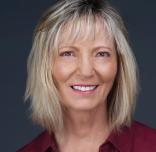
LORI HUTSON 253-219-7131

Monday - Friday, 8 a.m. - 5 p.m. lori@ljhutson.com
Y0040_GHHHXDFEN22_AD_M
*No obligation to enroll.
A more human way to healthcare™
*No obligation to enroll.
Qué será, será
Whatever will be, will be The future’s not ours to see Qué será, será (Doris Day, Frank De Vol)
Visiting Sarajevo is a visceral experience. Being there brings both the horrors of war and the resilience and optimism o f the people who survived it into crystal clear focus. Sarajevo is a modern-day testament to how manufactured political and religious divisiveness, fear mongering, and nationalism can tear a country and people apart, turn once friendly neighbors into murderous foes, and how no one, no one, wins in these conflicts.
by VICTORIA STARR MARSHALLHistory has tried to teach us this lesson time and time again. Yet, time and time again we refuse to heed its warning. We think we’re right, that God is on our side (never others’), and that what happened in Germany, or the Balkans, or Syria could never happen here.
But it did happen here. America’s own bloody Civil War ended just 167 years ago. And there is fear it could happen again.
Any talk of a civil war means we have lost perspective and are naïve to the horror it would bring. As the leading world and economic power for most of the last century, Americans enjoy one of the highest, most comfortable, secure, and privileged lifestyles in the world. Our politicians would have us believe otherwise, sowing discord and distrust among us. We arm ourselves against each other in response, we demonize “out” groups, or those different from ourselves, we fear social mediafabricated boogeymen, and we commit crimes while telling ourselves it’s all for love of God and country. We are right and righteous.
How do we get the perspective we need to avoid conflict?
Travel. When we look back at America from another country, we learn a lot about our own home, and it can change our perspective. If more people were able to travel, I believe our politics would look very different, and fewer people would be motivated by fear of “other.”
David and I recently traveled through the Balkans with a small group of 10 friends, old and new, on a 3rd Act Magazi ne adventure lead by Overseas Adventure Travel. The 18-day “Crossroads of the Adriatic” trip took us through Croatia, Bosnia-Herzegovina, Montenegro, and Slovenia, all once part of former Yugoslavia. The trip was everything we hoped it would be and more. Dubrovnik and the Adriatic Sea are spectacular. The natural beauty of the surrounding countryside is breathtaking. The food is interesting and delicious, and the warmth, good humor, and resilience of the local people we met was absolutely inspiring.
It's amazing to see castles and fortresses in real life. Dubrovnik was home to the Game of Thrones filming for seven years! Fantasy can be a nice escape, but to touch real history, to walk actual fortress walls and think about the people who built and defended them is mesmerizing and makes history accessible.
Dubrovnik was not spared in the Balkans war of the early 90s. Much of the historic walled city was bombed but continues to be lovingly restored with the help of UNESCO. We met with a woman there who was just age 6 when the war broke out. She shared her moving story of what it was like—of terror, a lost childhood, and of her father who was killed trying to defend Dubrovnik. Horrors that people and children in Ukraine are experiencing now as you read this.
In Bosnia-Herzegovina, east truly meets west. The Ottoman Empire ruled this region for more than 400 years until 1908, when Bosnia-Herzegovina
A trip to the Balkans reveals the dangers of nationalism and politically manipulated divisiveness but also hope and resilience.
A tower of the Ljubljana Castle in Ljubljana, Slovenia



Looking down on the Old City of Dubrovnik, Croatia, from the top of Srd Hill.
 3rd Act Publishers David and Victoria Marshall above the city on Minčeta Tower, the highest point of Dubrovnik city walls.
The 19th century homes and businesses that line the Ljubljanica River in Ljubljana, Slovenia, give the city an Amsterdam feel.
3rd Act Publishers David and Victoria Marshall above the city on Minčeta Tower, the highest point of Dubrovnik city walls.
The 19th century homes and businesses that line the Ljubljanica River in Ljubljana, Slovenia, give the city an Amsterdam feel.
A




 Our fabulous traveling group from the left: Peggy & Don (Ky.), Faye (Ga.), Bonnie & Marcia (Mich.), David & Victoria (Wash.), Don & Annie (Wash.), Dennis the Menace (Croatia Farmstead host), Mark & Nancy (Wash.), Goca (Croatia Farmstead host), Sandy (Wash.) and our wonderful Croatian tour leader Martina in front.
veteran of the 90s Serbian/ Bosnian war from Sarajevo shares what they endured.
A portion of Dubrovnik city walls.
Rower on Lake Bled
Our fabulous traveling group from the left: Peggy & Don (Ky.), Faye (Ga.), Bonnie & Marcia (Mich.), David & Victoria (Wash.), Don & Annie (Wash.), Dennis the Menace (Croatia Farmstead host), Mark & Nancy (Wash.), Goca (Croatia Farmstead host), Sandy (Wash.) and our wonderful Croatian tour leader Martina in front.
veteran of the 90s Serbian/ Bosnian war from Sarajevo shares what they endured.
A portion of Dubrovnik city walls.
Rower on Lake Bled
officially became part of Austria-Hungry. There is a street in downtown Sarajevo where the words, “Where East Meets West” are embedded in the pavement. If you walk one direction you are surrounded by Byzantine architecture, shops, Turkish coffee houses, and mosques. Walk in the opposite direction and Habsburg Neo-Gothic and Neo-Renaissance architecture takes prominence. In either direction, here and there on the pavement, we come upon “Sarajevo Roses,” unrepaired, red paint-filled damaged sections of sidewalks and roads where mortar shells fell and killed three or more people. There are numerous unrepaired buildings, too, riddled with bullet holes and blast damage. Twenty-six years after its end, the scars of war are everywhere. But the biggest scars are the ones you can’t see, the ones carried within the people.
In Sarajevo we met with a veteran of the 90s conflict who shared his story. He lost an eye, friends, and family members, and has severe PTSD from the war. He spoke softly and hauntingly, and swore that they’d learned their lesson and war would never happen there again. But others we talked with are not so sure.
Serbian separatists in Bosnia have lately renewed succession threats. There were European Union peace-keeping forces in our hotel. It seems the virus may only be lying dormant.
At one point, after expressing my sorrow over what they’d lived through, I was gently berated by a local guide who’d also lived through the war. “Don’t focus on the war, it’s past,” she said, “focus on our resilience! Focus on this beautiful sunshine today. Focus on the future. Life is good!” Her sentiment was caught on a sweatshirt I saw hanging in a shop window. “Sarajevo,” it read, “no bad days since 1995.”
From Sarajevo we head north and east back into Croatia to Karanc, a village close to the Hungarian border where we stay at a small farmstead you won’t find in any travel guides. It was a wonderful respite, and the third-generation owner who referred to himself as “Dennis the Menace” was a devilish delight. His wife Goca was especially warm and wonderful. We made fresh cheese, helped prepare earthenware-cooked goulash on an open fire—OMG, delicious!—and were welcomed into the homes of neighbors for a delectable homemade dinner.
Throughout our trip we enjoyed homemade wine and fruit brandy, most pretty good, which was always accompanied by the enthusiastic toast, “ZIVJELI!” (pronounced, ji-vo-LEE), which means “to life!”
Unlike Sarajevo, Zagreb, the capital of Croatia, was mostly spared during the war. But on March 22, 2020, as the whole world was locking down under COVID-19, Zagreb was hit with a powerful magnitude 5.3 earthquake with an epicenter just 4.3 miles north of the city center. Then, on December 29, 2020, central Croatia was hit with a Magnitude 6.4 earthquake. Buildings built in the 18th and 19th centuries were hardest hit, and repairs have been hampered by the pandemic. Still, we found the city to be beautiful, stylish, and vibrant, with a fascinating history and full of quirky museums like the Museum of Broken Relationships.
A café culture, tables line Zagreb’s old town streets where locals meet for coffee, wine, or beer—regardless of the time of day—to gossip and watch and critique the fashion parade. At dinner one night we were serenaded by a woman singing from a second story window across from the café. Softly backlit, beautifully singing Qué será, será and other songs we knew, it felt like we were sitting on a movie set. But this was real life. This is being alive.
Back to the coast we explored fortified hilltop villages including Hum, which bills itself as the smallest fortified town in Europe. True or not, I don’t know, but it was a small gem.
The real gem of our trip, however, was Ljubljana (pronounced lyooblyee-AH-nah). Ljubljana, the capital of Slovenia, is as worth seeing as Paris or Vienna. It’s beautiful, walkable, and vibrant, with a little bit of an Amsterdam feel and a fraction of the tourists. Virtually untouched by the recent war, there is a lightness here. A large section of the city center is pedestrian only, and families, students, and fashionistas spend their afternoons and evenings walking, biking, dining at cafes, and socializing. Slovenians are not home in the evening watching TV. In fact, while we were surrounded by the most delectable breads, pastries, and deserts imaginable—all readily consumed by the locals—no one was overweight! (Except the tourists.)
Crossroads of the Adriatic, indeed. There’s so much to see and learn here, so much they can teach us. In the end what we heard over and over is not to sweat the small stuff, and that compared to war, it’s all small stuff.
We are at a crossroads right now in our own country. I pray that we do not have to learn lessons the hard way. I pray for Sarajevo. I pray for us.
“Don’t focus on the war, it’s past,” she said, “focus on our resilience! Focus on this beautiful sunshine today. Focus on the future. Life is good!”
Though many impressive walls have played an enormous role in Europe’s past, today most are historical relics. From Hadrian’s Wall (constructed to defend the northern boundary of Roman Britannia) to the Maginot Line (built by the French in the 1930s to keep out the Germans), Europe’s walls have generally been symbols not of strength, but of mistrust and insecurity. Most were necessary when built. But the promising news in our age has been a European society that is advancing toward mutual respect and cooperation—dismantling walls so that it can move forward.
Long ago, most of Europe’s great cities— Paris, London, Rome, Florence, Milan, Barcelona, Vienna—were contained within walls, constructed during ancient and medieval times to defend against invaders. Many of these

walls were torn down long ago as cities expanded beyond their historic centers and land was opened up for grand circular boulevards. Some intact walls have been preserved in places like Dubrovnik, Croatia; Rothenburg, Germany; York, England; Lucca, Italy; and Carcassonne, France. In each case, these walls have become people-friendly, park-like spaces where visitors stroll, gather, and enjoy the view.
Some walls seem to survive to take us back in time. One of my favorites, Hadrian’s Wall, is the remains of the fortification the Romans built nearly 2,000 years ago in Britain. Now in ruins, this great stone wall once stretched 73 miles from coast to coast across the narrowest part of northern England, where Britannia ended and the barbarian land that would someday be Scotland began. More than just a wall, it was a cleverly designed military rampart manned by 20,000 troops. At every mile there was a small fort guarding a gate. On each visit I try to imagine the bleakness of being a young Roman soldier stationed there, 18 centuries ago. Today, two of these Hadrian Wall forts have been turned into museums, where visitors can see the ruins up close, view ancient artifacts, and get a sense of life in the distant past of a desolate corner of the Roman Empire.
Hadrian’s Wall is much-loved by hikers, who
follow the wall as it meanders up and down the natural contours of the land.

On one visit I grabbed a sunny late afternoon to hike the wall. Scrambling along Roman ruins, all alone with the wind and the sheep, I took a moment to simply absorb the setting. I surveyed vast expanses from a rocky crag that seemed to rip across the island like some horrific geological violence, frozen in mid-action.
But Europe’s most poignant walls are products of the recent past. Thankfully, so many that once stood for fear and intolerance now symbolize peace and progress.
During the Troubles, the 30-year conflict that wracked Northern Ireland, so-called “peace walls” went up in Belfast to separate its sectarian communities: Catholics, in favor of a united Ireland, and Protestants, in favor of staying in the United Kingdom. Today, instead of separating its warring tribes, these walls are a tourist attraction. Visitors from around the world decorate the walls with colorful messages of hope and thanksgiving that the bombs and killing that came with the Troubles are no more.
Europe’s most famous wall is the Berlin Wall, designed not to defend against
invaders but to keep residents from escaping. Built in 1961, this 96-mile-long barrier encircled West Berlin, making it an island of freedom in communist East Germany. When the wall fell on November 9, 1989, Europe enjoyed its happiest day since the end of World War II. In the euphoria that followed, “wall peckers” giddily chipped the Berlin Wall to smithereens. A surviving stretch of the wall has been preserved as a memorial to the victims of the Cold War. It’s a long,
narrow park stretching from a museum and viewing tower. What was once the notorious “death strip,” with a deadly obstacle course of barbed wire and tirespike strips, is now dotted with personal memorials and informational displays. That no-man’s-land between East and West is now an everyman’s land. And what's left of the long-hated wall has become a concrete canvas for graffiti artists—a people’s gallery celebrating freedom.
Europe’s walls were built for a reason. But, as travelers learn, the true success of a society lies in finding a way beyond walls. It’s no accident that the euro’s paper bills feature bridges, not walls—as do the dreams of great leaders.
This article was adapted from Rick’s new book, For the Love of Europe.
Rick Steves (www.ricksteves. com) writes European guidebooks, hosts travel shows on public TV and radio, and organizes European tours. You can email Rick at rick@ ricksteves.com and follow his blog on Facebook.
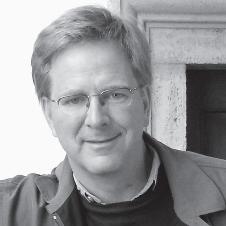

1,316m long remnant of the Berlin wall; writing on Belfast’s Peace Wall (photography credit: Dominic Arizona Bonuccelli, Rick Steves’ Europe)

If ONE was to ask a sports-loving fan on a Seattle street their opinions of the Sonics, their reply could be, “Yes. Jack Sikma, Dennis Johnson … those Sonics were the champs! Now, nobody remembers them.”
But ask this same Sonics question in front of the MoPOP (the Museum of Pop Culture) and the answer could be, “That Tacoma band should’ve been huge! Now, nobody remembers them.”
But even though the group, formed in the 1960s, had a sound that wound up not being made for the masses, their massive, raucous music was appreciated by late Nirvana frontman Kurt Cobain, who once said:
“The Sonics recorded very cheaply on a two-track and they just used one microphone over the drums, and they got the most amazing drum sound I’ve ever heard. To this day, it’s still my favorite drum sound.”
Indeed, countless groups have tried to copy their distorted, volume pushed to Spinal Tap-ish 11-level sound but never quite can. These include the White Stripes, who cite them as their main influence. The Black Keys tried but only sound like a Sonics’ tribute band on their take of the group’s, “Have Love Will Travel.”
Yes, The Sonics’ sludgy wall of sound was near impossible
to reproduce, as it was as unhinged as the noise that roared out of lead singer Gerry Roslie that made him sound as if a mad rock scientist combined Iggy Pop’s snarl and Little Richard’s scream to form one of the more distinctive voices ever in rock.
Their aural onslaught caught the attention of Jordan Albertson, an ex-Whidbey Island resident who turned his passion into an eight-year obsession to finally make the 2018 documentary, Boom! A Film About The Sonics. The flick didn’t get off the ground until Jordan met Pearl Jam’s Mike McCready in a Montana restaurant. Jordan recalled that Mike “called (Heart’s) Nancy Wilson right on the spot” and got the high-profile names in the documentary that attracted enough money to get it funded.
If only The Sonics made some funds back in the day, the original band could have reached greater heights both in acclaim and on the charts. Some could argue they peaked in the early years of their formation in the mid-1960s. Their awesome song, “The Witch,” became a local hit. Bassist Andy Papyra noted:
“We just played a homecoming dance and Pat O'Day (the region’s biggest DJ) came in the next week to do one of his sock hops and give a few records away. A bunch of kids kept
requesting ‘The Witch’ so I guess he finally played it and the place went nuts. The next day, Pat started playing (the record on the air). The single then became the all-time best-selling local rock single in Northwest history. O’Day later told me that the song had reached number one in sales, but the station policy said it was too far out to chart at number one. The station only played it after kids got out of schools.”
Buzz around the band was building and in 1966, they opened for big-named groups including the Beach Boys, the Kinks, the Mamas and Papas, and The Byrds. A bigger label beckoned that promised nationwide exposure, so they signed with Jerden Records, which had a distribution deal with ABC-Paramount Records. In 1967, the group was sent to Los Angeles to record their third album, Introducing the Sonics. Unfortunately, they were paired with producer/engineer Larry Levine, who had worked with then-hot shot producer Phil Spector. Spector’s perfectionist recording ways rubbed off on Larry and rubbed the band the wrong way. Roslie recalls:
“We went down to L.A. to record, and it started to become clear that the way we played, which is just loud and very direct, wasn’t what the engineer wanted. So, he said to our guitarist, ‘Oh you don’t have to play like that.’ He was referring to all the feedback we liked to use and the dark tones
we had. So, he said that they would add what they wanted back in the booth, post-recording. So that was frustrating because he wasn't trying to get our sound—he was trying to get what he wanted. We went in there, these crazy kids from the Seattle area, and all of a sudden they were trying to mold us into something we weren’t.”
And not many liked the flawed, finished product, which professionally a nd commercially finished the band.
Guitarist Larry Parypa went into the insurance world, his brother Andy became a teacher, and sax player Rob Lind went on to be an airline pilot. Director Jordan Albertson added: “Rob had an amazing story where he had Bruce Springsteen on the plane and Bruce said, ‘Rob Lind? From The Sonics?!” Bruce did an okay cover on The Sonics’ take of Richard Berry’s (writer of “Louie, Louie”), “Have Love Will Travel.”
No word if Lind asked Bruce before their flight, “Have love? We’ll travel.”
Mark Daponte is a copy/blog writer for an advertising company in New York City who has had four short comedic plays performed by various theater companies. He has sold three short stories, three full length screenplays, and punches up screenplays—because they don’t punch back. He currently writes for Culture Sonar (https://www.culturesonar.com/author/markdaponte/ .
For over 60 years, Seattle’s leader in innovative retirement living



We’re an intentional community of support and engagement. By residents, for residents.

AVAILABLE NOW: Jump the waitlist and invest in a one-bedroom home. Modern, open floorplans. Beautifully appointed. Contact us today at 206-382-3100. We can’t wait to hear from you!

Last winter, noticing that my poems were getting shorter and shorter as the years got longer and longer, I found myself turning to the Mother of all short-form poetry—haiku.
I read voraciously its anthologies and journals, its how-to books. Wherever I looked, one haikuist in particular seemed to be looking back at me: George Swede.
He was like the person you keep running into who doesn’t say much, but what he does say sticks to you with the imprint of affinity: alone at last I wonder where everyone is
A spotless mirror. Our desire to be alone pushing against our inability to be alone. Add to that, the solitude of those eight words connecting.
Traditionally in the West, we remember moments and write stories to get to those moments. In haiku, that strange import from 17th century Japan, compliments of Zen master Basho, the moment itself is flash-frozen in time, and dialogues with the silent white space on the printed page, that mysterious estuary into which the moment’s energy empties beyond explanation.
Swede, the 81-year-old Latvian-born Canadian psychologist whom for many years was a “university prof” at Ryerson
University, continues to write haiku at his home in Toronto. Ideas still come quickly despite his diminished energy, but he finds he has less patience with the writing process now than in the past.
“If ideas don’t come quickly enough, I move on to something else. Thus, my daily morning writing time has shrunk to a half hour or less (from an hour or more.)”
Cognitive slippage half the grand glacier already in the bay Swede has published more than 20 volumes of haiku and has been translated into 23 languages, among them Farsi and Norwegian, Spanish and Hungarian, Japanese and Ukrainian.
One of Swede’s great strengths is his tonal dexterity. His humor, for instance, is at times veined with melancholy: leaving my loneliness inside her Or: As he thinks of another haiku—she thinks of another man
He is at home as well with surrealism: empty baseball field a dandelion seed floats through the strike zone
Basho’s karumi (lightness) can
define much of Swede’s work, but the darkness is never far away.
I didn’t know much about his Latvian background. I knew he was born in Riga in 1940. The Russian Army invaded Latvia that year. The Nazis invaded a year later.
I phoned him one afternoon and asked him many things, beginning with his early life.
“My father was shot by the Nazis when I was two or three,” he said, evenly. “My mother said he was involved with the underground. My mother soon got involved with another man. His name was Arnold Swede. He adopted me. We escaped Latvia at night in a yellow truck. We drove through this forest toward Germany, ironically. There was a pistol on the dashboard. I still have a strong memory of that.”
So that, I thought, marks the beginning of how a Latvian boy becomes a Canadian haiku master. In an email he mentions seeing the destroyed buildings in Ukraine today, and how it reminds him of “the ruins in which I wandered as a child.”
Providentially, Swede’s second wife, Anita Krumins, a haiku writer like himself, was born to Latvian parents in a Displaced Person’s camp in Germany. They have been married 52 years.
The Swede’s arrived in Canada in 1947. They went to live with his
grandmother and step-grandfather who had a farm in Oyama in British Columbia. Three years later, Arnold Swede died of TB, and he and his mother moved to Vancouver.
“I don’t understand,” I said, “how poems like yours, so lightly held, could emerge from a childhood like yours.”
“My step-grandfather, Henry Stoddard, played a vital role in shaping my life. He was a gentle, kind person. Also, there was my grandparents’ dog Laddie, a Newfoundland Lab Mix. Afternoons I’d roam with him to a nearby forest and through open grazing lands with cattle skulls on the ground.”
I pressed him a bit more about his transition. He answered a bit more.
“I have always nurtured a connection with the immediately perceived no matter where I am at in the moment—in a forest, in the center of a large city, or in my study. This comes from a childhood spent largely alone. It grounded me.”
I’ve been able to find only one poem by Swede dealing with his birthfather’s death. A tanka (traditionally a 31-syllable, five-line poem going all the way back to the seventh century Imperial court of Japan), appeared in his 2016 volume, Helices: Nazis shot father and flung his body into a mass grave— wildflowers, butterflies, bees on the memorial mound
It was preceded by this more Swedesounding tanka: I search the obits for once-good friends— our garden’s daily births and deaths unrecorded
Though familiar with Beat poet Allen Ginsberg through a mutual friend, he kept his distance from the
haiku of the Beats influenced by Zen Buddhism.
“I didn’t like being bound by the rules of any institution. Actually, the haiku form itself puts any writer into a Zen-like mode.”
Swede’s aversion to rules puts him at odds with haiku traditionalists as well. There were tense moments when
dismayed at having to endure their “educational tool,” as Swede describes it, being dismantled before their very eyes.
after defining haiku each of us at our own urinal
World events may have darkened Swede’s light side, but when we spoke, and he found himself unable to recall a single specific incident as an itinerant haiku teacher to school children, he surrendered to a long burst of hopeless laughter.
“COVID has brought Anita and me even closer than we have been in all our years together," he says.
“Because of the pandemic, we became largely housebound since 2020. We have everything delivered, including wine (both suffer heart and lung irregularities.) Anita has prepared all the lunches and dinners, and I all the breakfasts. Anita has become a gourmet home cook who tries to avoid repeats as much as possible.”
he was invited to teach Canadian school children haiku in the late 70s.
He holds that the 17-syllable, 5-7-5-line Japanese haiku structure that is taught in Canadian and American classrooms, and culturally acknowledged generally, is misguided.
“Japanese haiku has almost always been written in a single line arranged in a column, as the Japanese language flows vertically, not horizontally. A 17-syllable haiku in Japanese is about 12 syllables in English. A 17-syllable haiku in English is seen as too long when translated into Japanese. So, it’s ironic, this emphasis on the need for 17 syllables.”
He told school children to stop worrying about 5-7-5. Teachers were
The man she cooks for is a gourmet poet of the moving mind. He cooks very small meals, in many different flavors, almost always on a low flame: One button undone in the clerk’s blouse—I let her steal my change
Sunrise: I forget my side of the argument a grain of sand in my umbilicus the theory of everything
Dining on Swede’s haiku, you may find that what you taste is yourself.
Robert Hirschfield is a New York-based writer and poet. He has spent much of the last five years writing and asse mbling poems about his mother’s Alzheimer’s. In 2019, Presa Press published a volume of his poems titled, The Road To Canaan. His work has appeared in Parabola, Tricycle, Spirituality & Health, Sojourners, The Moth (Irela nd), Tears In The Fence (UK) and other publications.

SWEDE'S AVERSION TO RULES PUTS HIM AT ODDS WITH HAIKU TRADITIONALISTS.
—Chinese Proverb
Adopting new technology can help us fit into—and benefit from—an ever-changing world. Consider the millions of people who, every day, order books online. It makes good sense and there are some practical advantages: There is no need to get in your car and drive to a bookstore or library. With just the touch of a finger, you can jump right in and escape to whatever world you are seeking. Reading romance, history, or about how to do just about anything on an eBook can fuel our imagination, fill our soul, and leave us wanting more.
pause draws me further into the story.
I received one of my life’s most inspirational gifts upon graduating college, a print of Homer Winslow’s A New Novel. I have carried that print with me and hung it in my office at every job since. The painting speaks for itself. For me, it’s not about the artist’s style or technique, but the depiction of pure joy lying in the grass on a warm summer’s day, resting on a pillow, and reading a book.
I am not averse to reading eBooks. I sell my work on Amazon in digital and print form. And like most people, I am inundated with technology. Gadgets rule my life, and given the option I’m not sure I could live without them. It’s a predicament.
BY JILL MODELL-DIONSo, what’s my problem?
But I prefer the feel of smooth pulp to the swipe of an eBook. I enjoy turning the page. There’s something magical about the touch of a book page corner. In those few seconds—as I physically turn the page—it’s as if I’ve put an open hand behind my ear and the writer has my full attention. The tactile
It’s hard to explain to a Zoomer since they were born into a digital world. I’ve read experts recommend waiting until children are 2 before giving them digital devices, yet parents get seduced into buying such gadgets for convenience and accessibility. I was both amazed and dismayed watching my three-year-old granddaughter operate her mother’s iPad—astounded by her ability to maneuver the back button to retrieve her video choice, and saddened by her absorption in a virtual world.
In a time when everything moves so fast, to keep up we need to get on board. It doesn’t mean we have to update our phones every time a new one comes out, or stop how we have always done things. It suggests we must continue to adapt and try out new things and ways that make our lives easier and more efficient. And for those of us who wish to keep our old-style ways, we can do just that. It's okay.
As for technology I love, I will choose my new air fryer over utilizing a pan any day. I’ll ask Alexa to “find my phone,” instead of worrying about where I left it. Using GPS maps to find my way around is a godsend. And I use an electronic calendar in place of a day planner.
But when it comes to reading, the soft pulp of a page will always outshine the flat screen.

This gal will always turn the page.
Jill Modell-Dion started writing after a long career in senior therapeutic recreation. She’s written several workbooks for caregivers on creative activities. Her first novel, The Laundromat General, was published in April and her next book, The Vacant Piano, will be released soon. Visit her website agingcreative.com to read her story/blog, which always offers an aging perspective.
“Do not confine your children to your own learning, for they were born in another time.”
Meet Kathryn Carole Ellison.

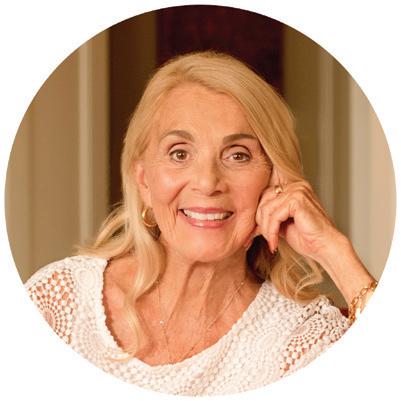
Author and poet Kathryn Carole Ellison’s fifteen beautiful books are a result of a lifetime of writing — starting as a journalist. When her children reached the age of reason she chose poetry as a means to communicate life’s lessons to them. Ellison has penned more than 600 inspirational and wisdom-filled poems for living a more joyfilled life, and overcoming everyday challenges… a family tradition that new generations and families around the world have come to cherish.
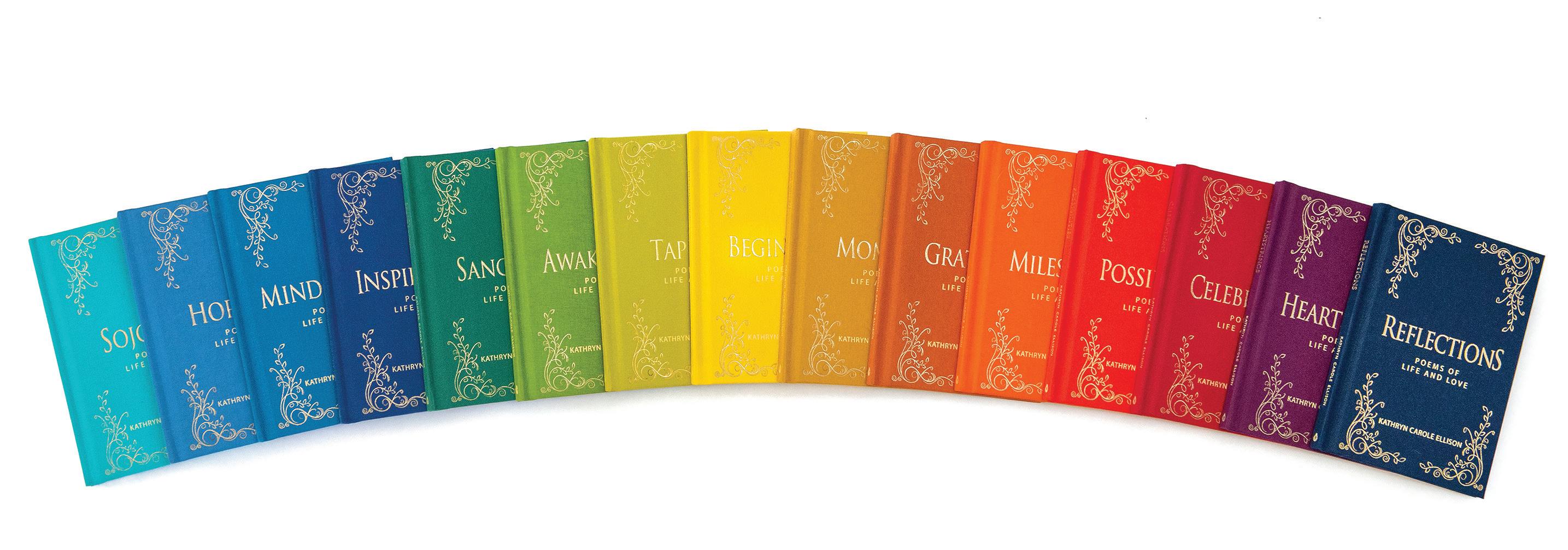
Roll it up, wrap it up, what could be neater?
Add a spread, forget the bread, be a healthy eater!

When in doubt, lay it all out, no need for precision.
Bite by bite, day or night, you’ve made the right decision!
Oh, the contradictions of winter food! Many of us are still in the throes of committing to the proven behaviors for healthy living—eating better, exercising more, getting to the projects that were suspended at the first pre-Halloween pumpkin spice latte.
The comfort foods of winter tempt— stews and soups, creamy baked dishes, rich desserts, often preceded by words like “hearty” and “deeply satisfying.” My word of choice during the holiday season: “slather”—as applied to butter, melted cheese, and whipped cream.
For the New Year, I’ve adopted a new concept to replace that of excess: wraps. Not the familiar flour tortilla wraps where there is more wrap than filling, providing safe cover but tasting more like cardboard than food. The world of wraps is far more diverse and appealing.
A quick review brings to mind dumplings and wontons, blinis and blintzes, samosas, Ethiopian injera, and Thai Betel leaves. Vietnamese fresh rolls and Chinese spring rolls. Crepes, pasties, knishes. Pita and lavash. Tortillas, both flour and corn wrap around fajitas and other grilled or sauteed fillings. The more I think of wraps, the more I see them everywhere.
And now that even fast-food chains offer low carb or carb-free alternatives for their burgers and patties, there are many reasons to feel rhapsodic about wraps.
Trader Joe’s and other grocery stores offer an array of wraps that invite exploration and creativity. The newest choices at Trader Joe’s illustrates: Fresh Jicama wraps add crunch and coolness to their filling; egg white wraps are delicate, crepe-like circles that invite heating as well as room temperature pleasure; parmesan cheese wraps can be wrapped or draped over fillings.
“Why not just make a sandwich?” I hear you mutter.
Instead of approaching this crucial question as either/or, this is definitely a both/and issue. Sandwiches will never go away. Heck, anything can be slapped between two slices of bread or tucked into a hoagie roll.
Wraps and their pocket partners take a bit more finesse, given tendencies to tear or not yield a big enough space for stuffing.
The challenge is to find the wraps that work for your particular use: casual lunch, appetizers, main course, or desserts. Carb or non-carb, proteinbased, or mainly water. Gluten-free? Vegan? The world of wraps is all about options. For me, that means fun and creativity.
What you wrap around depends on the wrap or wraps you have chosen. My refrigerator and pantry are always stocked with ingredients that allow me to be flexible and match the need.
I stick by my advice about assembling a spread for a casual gathering. Make sure that among the items chosen are foods that are “dippy, pickly and cheesy.”
Those would be:
Spreads and dips
Hummuses and other Middle Eastern spreads. My current favorites: Trader Joe’s tomato-basil hummus, olive tapenade, and vegan tzatziki.
I crave almost anything pickled. Bread and butter pickles. Garlic spears. Capers. Olives and tapenades. Mama Lil’s peppers. Pickled asparagus, artichoke hearts, bottled red peppers. sauerkraut, kimchi. Fermentation has taken over many deli counters.
Cucumber spears, shredded carrots, sliced radishes, tomatoes, shredded cabbage, fennel, lettuce. Basil, cilantro, mint, and dill all add a shot of flavor to whatever you are assembling.
Turkey, ham, salami. Egg salad, tuna salad and the like.
Endless possibilities. My favorite Trader Joe’s cheese, Unexpected Cheddar, proved itself so popular that it is now sold shredded with a cheese spread version added to the lineage.
Condiments
Mustards—the many choices give different outcomes. Be brave and try some that are new to you. Ketchups and chutneys. Mayos and other bottled sauces for spikes of flavor and heat.
First, don’t be a Dagwood! For those of you old enough to remember the comic character Dagwood and his multiple foot-high sandwiches, we are thinking horizontal, not vertical.
Open your chosen wrap and spread the whole surface with the condiment or spread of your choice. Next add whatever proteins you are using. Finish with vegetables, pickles, and top with any cheese or sauce. Roll or wrap like a burrito. If you are heating the wrap, start with 30 seconds and check for the level of heat and melting you desire. It can be hot, so check before taking a bite!
Rebecca Crichton is executive director of Northwest Center for Creative Aging and presents programs on that topic in the Seattle area.
• 3 tbsp. Capers
• 3 tbsp. Kalamata olives
• 3-4 green onions or ¼ sweet onion
• 1 tsp. Anchovy paste or 2-3 anchovies
• 1 tbsp. Dijon or stoneground mustard
• Fresh herbs (basil, mint, or dill)
• 1-3 tbsp. mayonnaise
• Juice of half lemon
• 1 can tuna (use whatever level salt and/or oil you like.)
In bowl of food processor, pulse all ingredients except tuna.
Once ingredients are coarsely chopped and well mixed, add tuna (use oil if you choose or drain if in water.) Pulse until chunky and everything is incorporated. Taste for seasoning. Add more lemon, salt, or mayo if you feel it needs it.
Among my favorite tools is a small triangular strainer for yogurt. I use low-fat or nonfat yogurt and by the time it has drained for a day, I have a healthy version of Labneh or thick Greek yogurt. Of course, you can just start with either of those.
• 1 cup drained yogurt of labneh, or thick Greek yogurt
• 2 cloves garlic, crushed
• Juice of 1 lemon
• 1/3 to 1/2 cup chopped herbs (cilantro, dill, parsley, basil, mint, chives)
• 1-2 tbsp. good olive oil
• Salt and pepper
Mix ingredients together and add salt or lemon as needed.
It is a long way from her hometown of Hamburg, Germany, to Seattle. But Christina Scheppelmann has never minded travelling long distances for her career. “I’ve lived in five countries, on three continents, and Seattle is my eighth country,” says the general director of the Seattle Opera. “I’m an internationalist, not a provincialist.”
She is also an arts administrator who has never had the yen to be a professional musician herself. This very direct, highly approachable, and enthusiastic head of one of the most respected opera companies in the country acknowledges that she attended a “music high school” in Germany, studied violin, and even sang in the Hamburg State Opera youth choir.
But she always knew she’d be happiest backstage, helping manage artists and musical organizations, “because it’s fun and it’s really fascinating.”
The travel perks have been great, too. Before starting her Seattle Opera post in 2019, Scheppelmann began her career representing and promoting opera singers and directors in Italy, where she got to spend time in cities including Milan and Venice. Then it was on to Barcelona, a special place because her grandfather was Spanish, her father was born in the country, and her family spoke the language at home.

Speaking of languages, Scheppelmann is fluent in five: German, Spanish, French, Italian, and English. Her
impeccable English has come in very handy in the U.S. She has worked for the San Francisco Opera and spent 11 years at the Washington National Opera in Washington, D.C., overseeing artistic planning in collaboration with general director—and world renown tenor— Placido Domingo. She also did a stint in Oman, Jordan, in the Middle East.
After Aiden Lang, the previous general manager of Seattle Opera resigned, Scheppelmann threw her hat in the ring

to replace him and make another move to a new locale with her stage manager wife, Beth Krynicki. (Fun fact: The two were married in a civil ceremony by the late Supreme C ourt Judge Ruth Bader Ginsburg, an opera buff.)
“I knew Seattle, and when I worked in San Francisco I had a great dialogue with Speight Jenkins over the years,” Scheppelmann explains. (Jenkins, as most local opera fans know, retired in 2014 after three decades developing the Seattle Opera into an internationally prominent company.)
“I would come here at least once or twice a year to see Speight and watch a production. It’s such a beautiful city, it
has water and mountains and it’s very green. And [McCaw Hall] is a very good opera house, with great acoustics and a great stage.”
Scheppelmann was well aware of the challenges that awaited her. Seattle Opera had amassed a large operating deficit, and like many other major arts organizations was aiming to bring in a younger audience to join its many older, longtime subscribers. With her vast experience and determination, she was prepared for the challenge. But less than a year after arriving, another test— unexpected and daunting—presented itself: COVID-19.
“We were closed for 18 months,” she recalls. “And we had no idea when we would be able to perform again.”
With successful new vaccines, and COVID protocols for audience members and performers, the Seattle Opera got back into action earlier this year, and is now in the midst of its current season. In characteristic fashion, Scheppelmann has slated classic operas along with new works that reflect the company’s commitment to artistic excellence and cultural diversity.
Scheppelmann wants more people to know that opera is for everyone. “We need people to come back to us!” she says. “We need the ticket sales of course, but beyond that we are doing this for an audience. People have gone back to restaurants, to sports games. But what is a city without art, without theater, opera, jazz, ballet? If you want to be a big city, you have to have it!”
Below are the productions on tap by Seattle Opera at McCaw Hall (Seattle Center) through spring 2023. Operas in foreign languages are translated by supra-titles projected above the stage.


Samson and Delilah: This famed opera, composed by Camille Saint-Saëns and dramatizes the biblical tale of the seduction of strongman Samson by the beguiling Delilah, will be presented in a concert version without full costuming and sets but with a complete cast and orchestra. The heralded mezzo-soprano J’Nai Bridges, with local roots, “will sing the role of Delilah,” notes Stoppelman. “I think her mother is going to bring half of Tacoma to see her!” Plays January 20 and 22, 2023.
A Thousand Splendid Suns: This timely world premiere opera is based on a novel by Khaled Hosseini (also the author of the bestseller The Kite Runner) about a 30-year friendship between two women in war-torn Afghanistan, with a score by Sheila Silver and libretto by Stephen Kitsakos.
“It is a beautiful piece, a powerful piece,” declares Scheppelmann. “The director is a brilliant Afghan filmmaker, Roya Sadat, who left her country when the Taliban took over. She will bring a lot of authenticity to the production.” Plays Feb. 25–26, March 3, 5, 8 and 11, 2023.
La Traviata: The season will close with a presentation of this popular classic, based on the romantic 19th century novella, La Dame aux Camélias by Alexandre Dumas fils. The tale of an alluring, ailing Parisian courtesan who falls in love with the son of one of her wealthy lovers will be seen in an acclaimed and lavishly appointed co-production with Washington National Opera, staged by leading director Francesca Zambello Plays May 6–7, 10, 13–14 anad 19, 2023
Ticket prices begin at around $35, with senior rush tickets $45. Tickets and more information: 206-389-7676 or seattleopera.org.
Misha Berson writes about the arts for crosscut. com and many other media outlets, teaches for the UW Osher program, and is the author of four books, including Something’s Coming, Something Good: West Side Story and the American Imagination (Applause/Hal Leonard).
Of the many ways ageism can manifest, internalized ageism can be the most insidious. Ageism flows from a social construct of age norms—rules that govern a social clock dictating the timing and order of significant life events such as marriage, parenthood, and retirement. Norms that stereotype the worth and capabilities of older adults—and young people, too, for that matter—are ageist. When we accept age stereotypes to be true when they are not, or not to the degree of the stereotype, and internalize them, it affects our choices, our behavior, even our longevity.
Have you ever thought, “I’m too old to (fill in the blank)?” That’s your internalized ageism talking. You may not want to do something. You may have limiting factors such as health, strength, or disability, but the number of candles on your birthday cake is not the reason to stifle your dreams, goals, and creativity.
“Dancing with the Muse in Old Age works against ageism and for creativity,” says Seattlebased author Priscilla Long. “It reflects the new ways of looking at old age—as a potentially dynamic and productive time full of connections to others and deeply satisfying work.”

Long, now 79, is a meticulous researcher. In Dancing with the Muse in Old Age, she distills the best contemporary writing on aging to its essence and inspires us with the stories of creative people who never let their age be a barrier.

With a focus on the arts, Long encourages us to explore our own creative path. “In old age, craft skills, social intelligence, emotional intelligence, learning how to learn, how to connect with others all support the artist who continues to work or even one who is just starting out on a path of creative work.”
Each chapter ends with writing prompts to inspire reflection and self-discovery, such as “Is there a new creative endeavor you might enter into? If you are already an artist, perhaps something different? If you are a poet, might you learn to draw? If you are a master gardener, perhaps you would enjoy working in clay? Write on the possibilities.”
“Death can come at any age,” she writes, “but at the conclusion of old age it will come. Death is our deadline … the time remaining is not forever. This tends to focus the mind. ‘You ask: What do I need to need to finish, what work is most important for me to do in whatever time I have left? What do I want to leave behind?’”
One of the things Long recommends we can do is to model how to grow old. “As we who are now growing old shape a new sort of old age—one full of flourishing well-being, social connection, learning, moving our bodies to the extent we are able, and engaging in creative work—we are at the same time helping to reshape the future of everyone else: the middle aged, the young, the generations to come.”


for your
Exercise your brain and have some fun with these puzzles designed to stimulate different cognitive functions.
Complete the following sentences with the correct idiom. Each idiom will begin with the word on.
1. If you’re having success after success, you’re on a
2. If the assistant you hired is well-informed and capable, she is on the
3. If you’ve stopped drinking alcohol, you’re on the



4. If your company is laying off workers, and you know you’re on the list, then you’re on the
5. If you want your guests to arrive on time, you tell them to come at seven o’clock, on the
6. If your waiter brings you an appetizer that you don’t have to pay for, you’re getting it on the
7. If you’re on the campaign trail making speeches and asking for votes, you’re on the
Given a clue for each of two famous people, can you figure out what name they share? For example: Clarence Thomas Jefferson or Jesse James Cagney.
1. Astronaut and senator from Ohio; and one the best-known band leaders of the 1930s, whose plane disappeared over the English Channel in 1944.
2. Short story author of The Gift of the Magi; and Richard Nixon’s secretary of state.
3. Author of The Legend of Sleepy Hollow and Rip Van Winkle; and the composer of “White Christmas” and “God Bless America.”
4. In 1953, he was the first to scale Mt. Everest; and she’s been a First Lady, a senator, and a secretary of state.
5. The actor famous for playing General Patton; and the “King of Ragtime,” who composed the “Maple Leaf Rag” in 1899.
6. Author who introduced millions of children to Wonderland, the Cheshire Cat, and the Mad Hatter; and the actor who played Archie Bunker.
7. Broadway actress best known for playing Peter Pan; and film director of Taxi Driver, Raging Bull, and Goodfellas.
Given the year they won the Nobel Prize, their home nation and their most famous works, can you name these past winners of the Nobel Prize for Literature? (All of them wrote in the English language.)
1. 1925, Ireland . Pygmalion; Major Barbara; Saint Joan; Man and Superman.
2. 1930 United States. Babbitt; Main Street; Arrowsmith; Elmer Gantry.
3. 1936, United States. The Iceman Cometh; Long Day’s Journey into Night; A Moon for the Misbegotten. 1948, United Kingdom. The Love Song of J. Alfred Prufrock; The Waste Land; Murder in the Cathedral.
5. 1949, United States. The Sound and the Fury; As I Lay Dying; Absalom! Absalom!
6. 1962, United States. Of Mice and Men; The Grapes of Wrath; Cannery Row; Travels with Charley.
7. 1969, Ireland. Waiting for Godot; Endgame; Happy Days; Krapp’s Last Tape.
8. 1993, United States. Sula; Song of Solomon; Tar Baby; Beloved.
Reprinted with permission from Nancy Linde, author of the best-selling book 399 Puzzles, Games, and Trivia Challenges Specially Designed to Keep Your Brain Young, 417 More Games, Puzzles, and Trivia Challenges Specially Designed to Keep Your Brain Young; and 299 On-the-Go Games and Puzzles to Keep Your Brain Young. She is also the creator of the website Never2Old4Games.com, which is used by many senior-serving organizations in the U.S. and Canada.

The Applicants on our wait list are planning now for their future. To tour our campus and learn more about Panorama, call 1-360456-0111 and ask to speak to one of our Retirement Advisors.
As the largest Life Plan Community in the Northwest, Panorama’s active lifestyle allows countless opportunities to learn, explore, volunteer and create. Our 140 acres of winding streets and towering trees has the perfect apartment or single family home for you. Enjoy a tight-knit community of active retirees who feel peace of mind knowing that additional support is available in our Assisted Living and 5-Star Skilled Nursing Center.


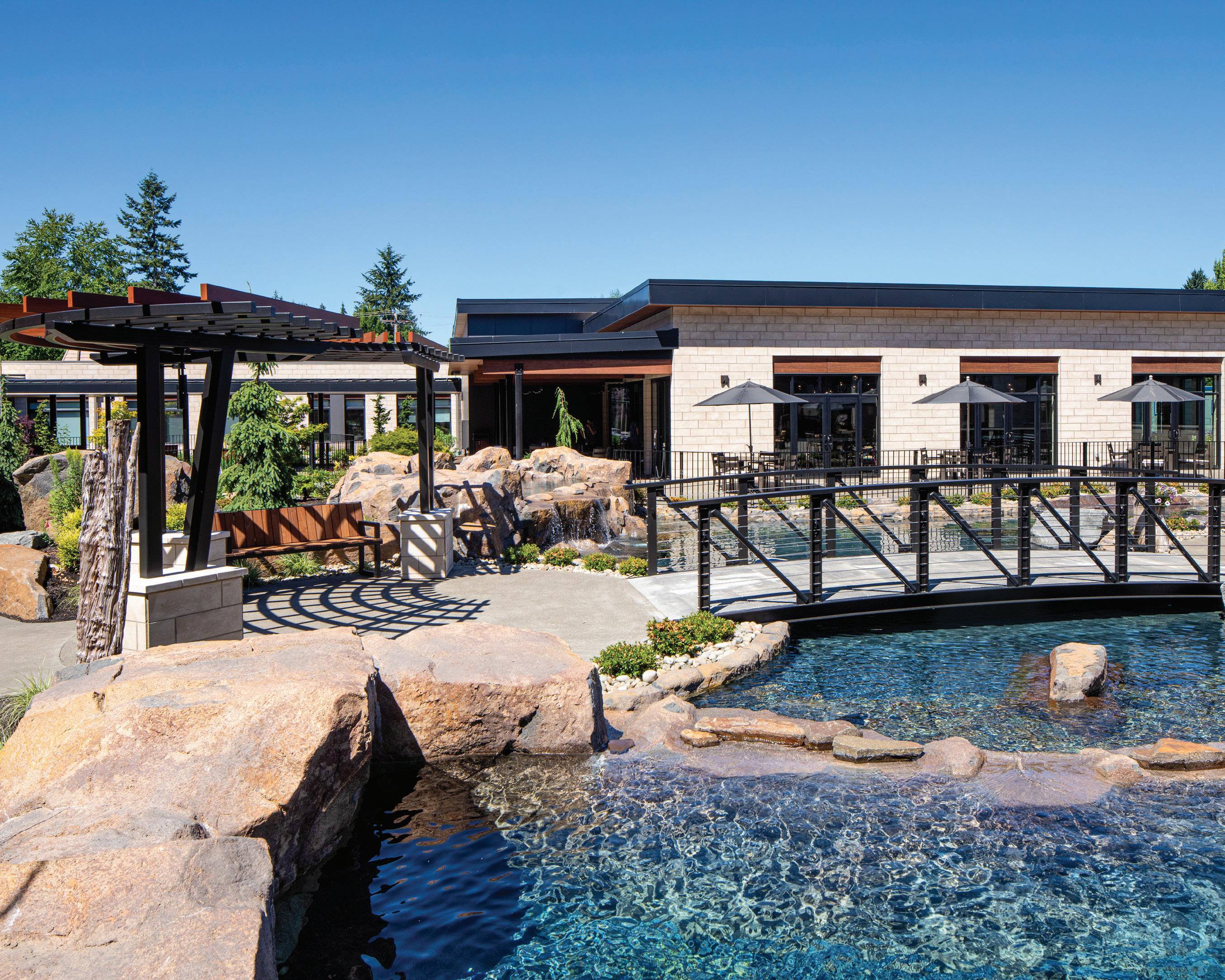
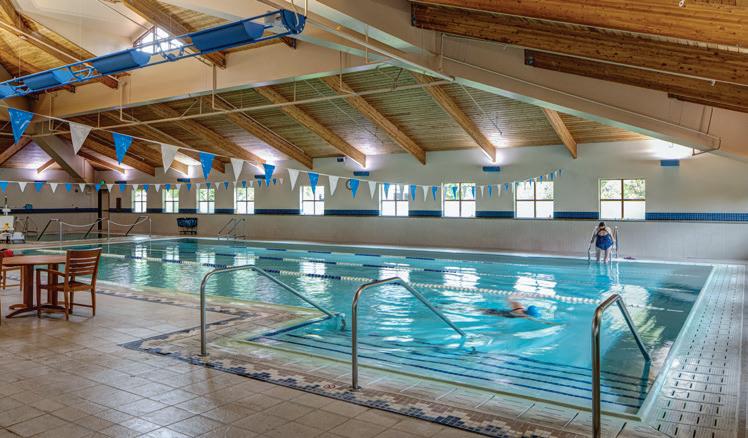
We currently have limited availability for 1-bedroom apartments! Call 1-360-456-0111 to inquire about this unique opportunity.

